We slept quite well until about 4:00 a.m., when a ruckus began just outside our tent. Michael thought it was underneath, Nancy thought it was on top, but whatever, it was close, and it was some sort of fight among small animals. At least one was making a high-pitched squealing noise while the others snarled, and something (one of the participants?) was thrown against our tent multiple times. This went on for about twenty minutes, and then all was quiet.
We had just fallen asleep again when the alarm went off at 5:15. We needed to eat breakfast early once more because our entourage was scheduled to leave the Ashnil Mara Camp at 7 a.m., and this time we weren’t coming back. Having been warned that there would be no lunch provided today, and likely no opportunity to buy anything more than convenience-store snack foods along the road, Michael took a plastic bag to the buffet and filled it with raw vegetables while Nancy wrapped some baked goods in a napkin and stuffed a couple of yogurt cups into her purse.
After checking out of the camp, we loaded our suitcases into the back of Jackson’s vehicle. Pam and Eric would be our companions for the morning. As we waited for them to check out, we told Jackson about the fight we had heard outside our tent. He suspected that it was probably one of the mongoose stowaways we had brought into the camp last night, mixing it up with the mongooses that live in the vicinity. (Nancy had seen a couple of the cat-size critters playing near our tent the day we arrived, so we knew there must be a burrow nearby.) Jackson said he had searched under his vehicle this morning for the mongoose that had hitched a ride with him and was pretty sure it was gone, so the fight was likely a dispute between the local gang and the territorial invader.
Once Pam and Eric had loaded up, we waved goodbye to the rest of the group and took off. We were headed for a tribal village that we had been invited to visit, similar to the Samburu village we had toured on Monday. Jim had given all of us the option of visiting the village or going on another game drive on the way out of the Maasai Mara Reserve this morning; most had chosen the game drive, but the four of us decided that we wanted to see the village. Because Jim had appointed Jackson to take us there, someone started referring to our little group as “the Jackson Five.”
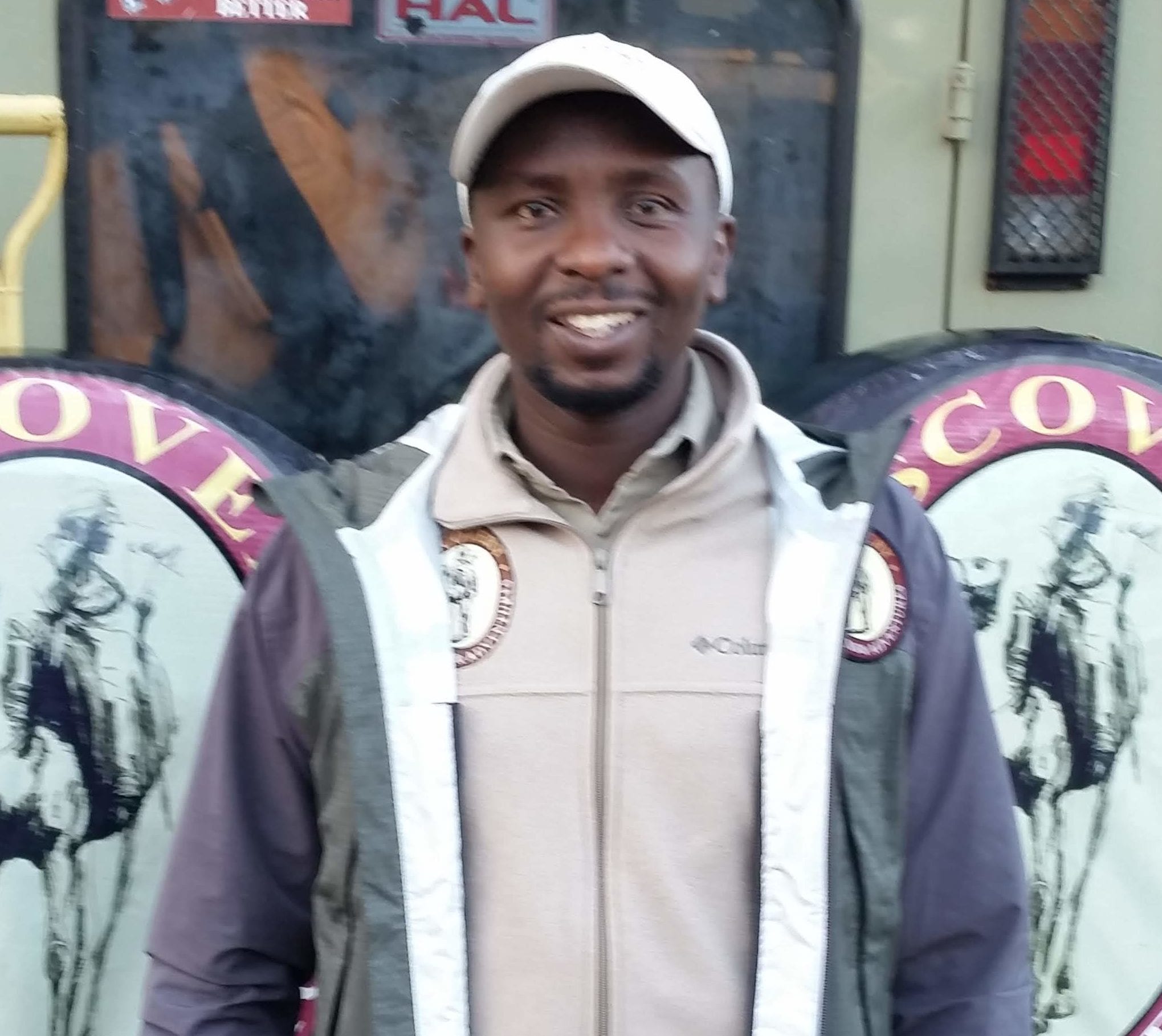
Jackson
In addition to having earned the nickname “Michael Jackson” with his dance moves and becoming known as the most loquacious voice on the guides’ CB network, Jackson has developed a reputation as Discovery XA’s craziest driver. Thus we were somewhat concerned that he would be the one taking us over muddy roads that had become even slicker than yesterday after another night of heavy rain. Worse, Jackson had made it known that we would have to move quickly to get to the village, take the tour, and meet the rest of the group at Lake Naivasha for this afternoon’s boat ride.
The Land Cruisers are equipped with seatbelts, but we haven’t been using them regularly because (a) they make it harder to jump up and stand on the seats for better wildlife viewing, and (b) seatbelts are designed to stop a body’s forward momentum, but our vehicles seldom move forward at more than about 20 miles per hour–so what’s the point? Today, however, with the combination of slippery surfaces, the need for speed, and Jackson at the wheel, we decided that it might be prudent to buckle up.

Balloon safari
The sun was shining brightly and visibility was good. Two rainbow-hued hot-air balloons were silently sailing overhead, while a third made a soft, graceful landing in a wide expanse of grass to our left. Down on the road, however, the surface was treacherous with deep, rain-filled ruts and long stretches of slick, dark mud that might as well have been black ice. The Land Cruiser–even with its heavy-duty tires, all-wheel-drive, and 4450cc engine–was slipping and sliding all over the place, and we could tell by the way Jackson was gripping the wheel and the earnest look on his face that today he was not at all interested in showing off, but simply in keeping us upright and moving forward. At one point, as we bounced over a rise and hit another patch of mud, the tires completely lost traction and we spun around nearly full-circle. We all took a deep breath, undoubtedly said silent prayers of thanks, and then kept going.
A few minutes later we came upon a van that had not been so lucky: its tires were sunk so deep into the mud that Jackson declined to even try pulling them out. He talked with the other driver for a moment and then radioed for a winch. The young American-looking couple who had been riding in the vehicle–honeymooners, perhaps?–had gotten out and were glumly kicking clumps of grass at the side of the road. (Give them points for wearing knee-high Wellies into the reserve today.)
Not long after that, we met another safari vehicle going the opposite direction. As they always do, both drivers slowed down and greeted each other. We’re not sure whether the Discovery XA guides actually know every other safari guide in Kenya, but whether they do or don’t, they always stop to talk for a minute or two before passing. One of the primary reasons for this is to build rapport with guides from other companies so that they will be willing to share important information about wildlife sightings and road conditions. This morning the other driver had more than a tip to share: he handed a box to Jackson, who explained that it contained a pair of shoes Steven had left in Samburu earlier this week. The package had been passed along from safari driver to safari driver, Pony Express-style, and soon would end up in Steven’s hands. We doubt that UPS or DHL could have provided more efficient service!
Before we left the reserve, we passed a lone elephant–the only one we had seen in the Maasai Mara. Geoffrey had told us that we should not expect to see many elephants here this week because they don’t like the confusion wrought by the migrating wildebeests, so they tend to keep to themselves among the trees. He was right.
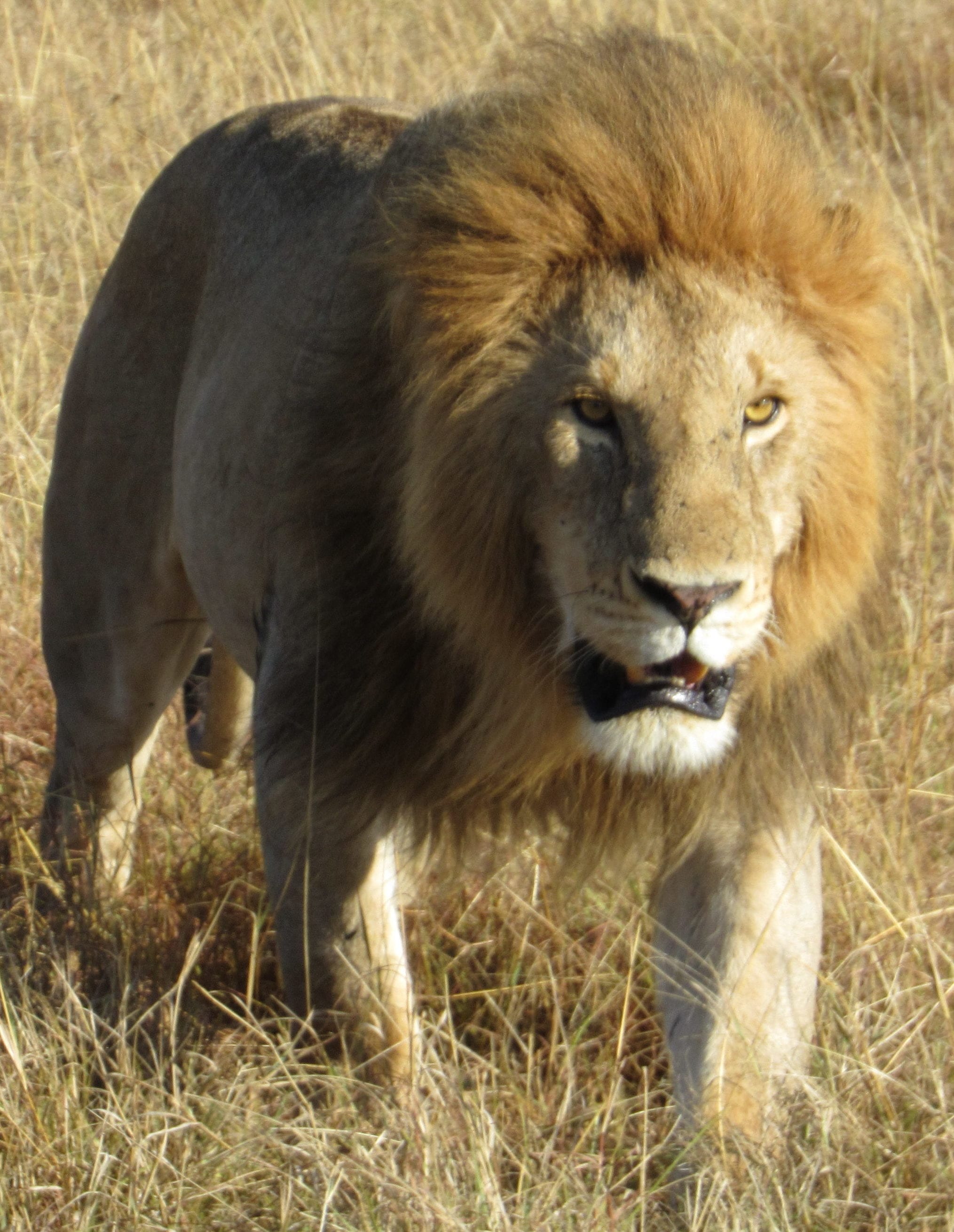
His royal highness
The other memorable animal sighting we had before we passed through the exit gate was a lion. Not just any lion, but a magnificent male with a glorious full mane, regally striding along the side of the road. Several vehicles entering the reserve had pulled over to watch him.
“It’s like he’s on parade,” Pam said. “His royal highness, welcoming guests into his kingdom.” Or in our case, giving us an official send-off.
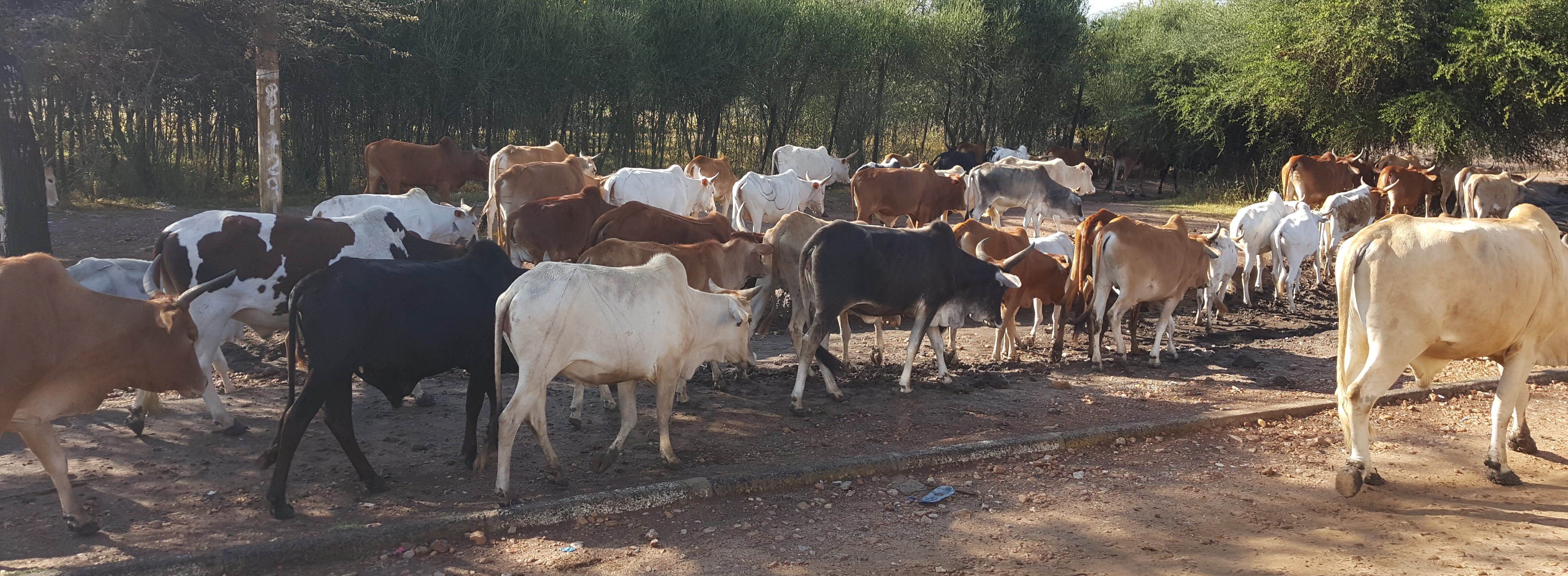
An impromptu cattle crossing stops traffic
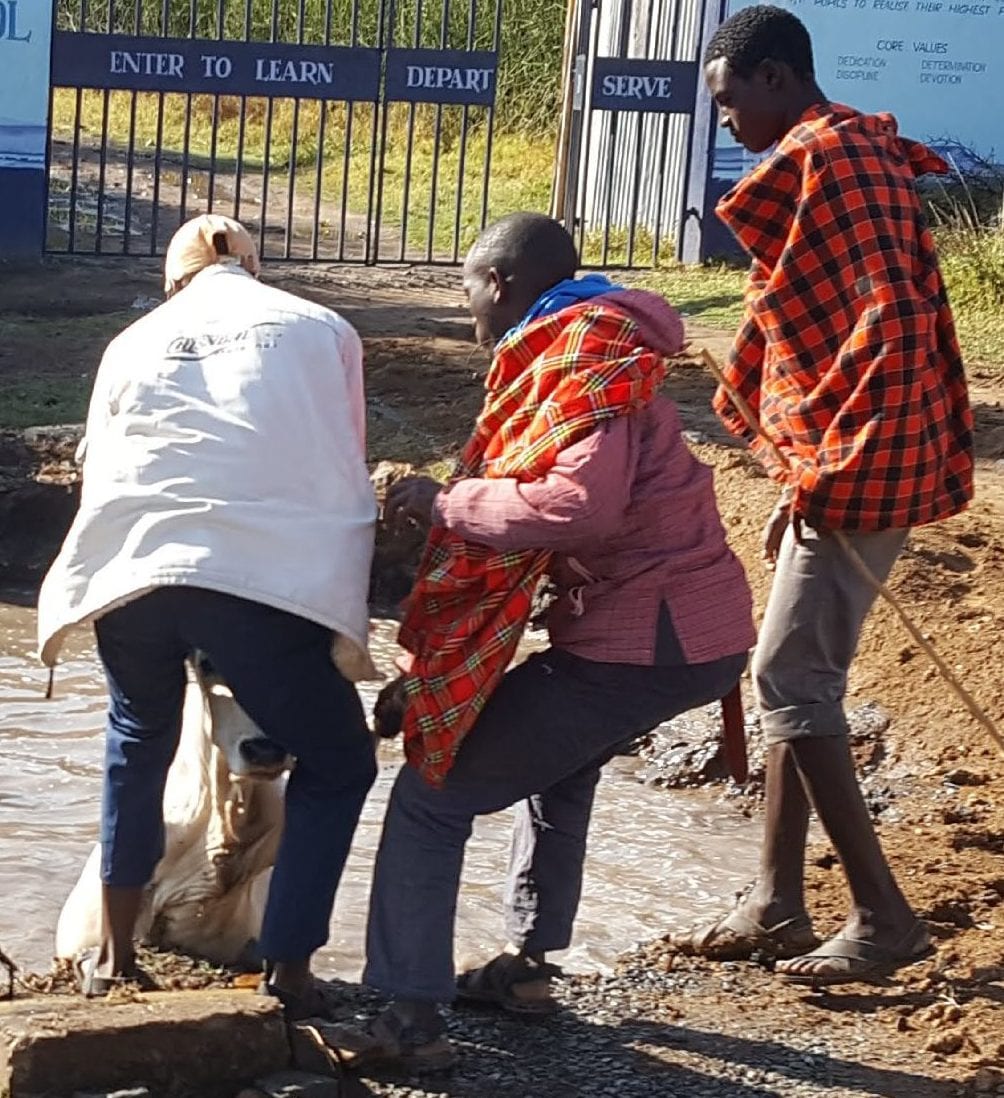
A literal “ox in the mire” situation on this sabbath day. It wasn’t until we were reviewing our photos later that we noticed the motto posted on the gate of the boarding school: “Enter to learn; depart [to] serve.” A nearly identical statement is displayed at the main gate of Brigham Young University
Just on the other side of the herd, we saw three men struggling to rescue a cow that either had slipped or been pushed into a hole full of brown water just outside a boarding school.
We arrived at the Maasai village about 9:00 a.m. If the villagers were disappointed that only four tourists showed up instead of twenty-four, they didn’t let on–and anyway, a Chinese tour group was just leaving, so at least we weren’t their only customers today.
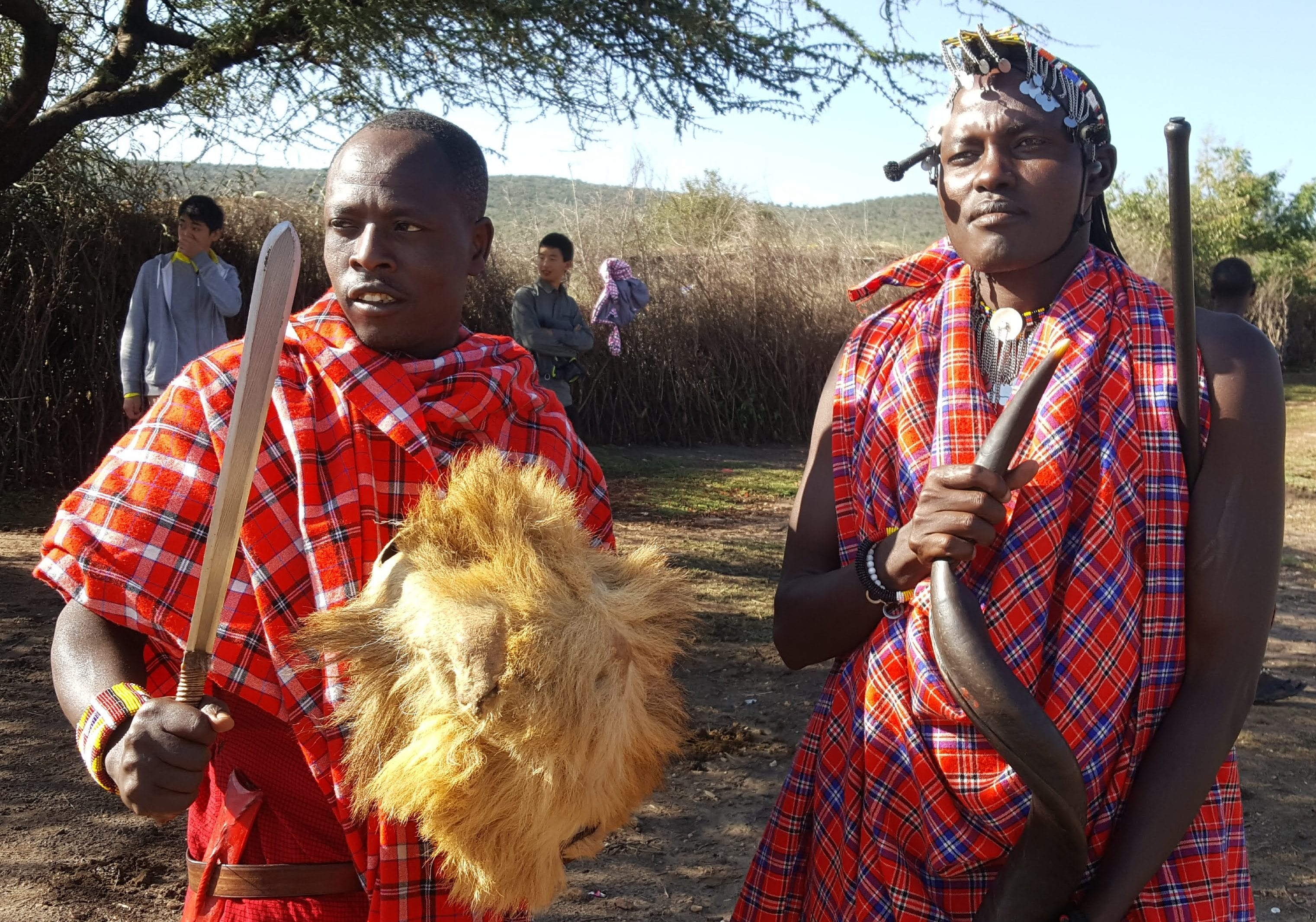
The lion-slayer with Joseph, our guide
As at the Samburu village, we were greeted outside the gate by the designated “welcomer,” a young man named Joseph who spoke English well. He introduced another warrior, this one brandishing a machete and wearing the mane of a lion he had killed himself.

Eric
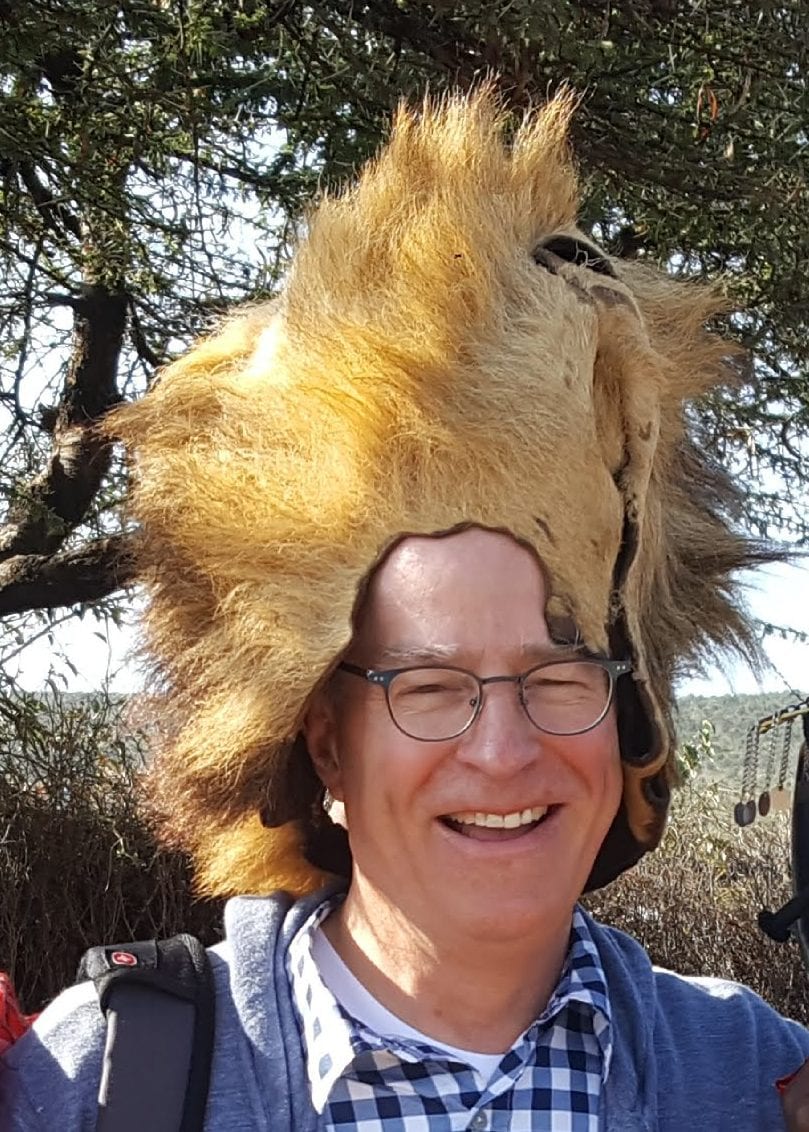
Michael
Both Eric and Michael were allowed to wear the lion mane for a few moments–although Eric seemed to regard the opportunity less as a privilege than as an offer he couldn’t refuse.
Meanwhile, Joseph was blowing a kudu horn to call all the men of the village together so that they could sing and dance for us–or with us, as it turned out. Later, after we stepped beyond the hedge of shrubs and sticks enclosing the village, the women did the same thing.
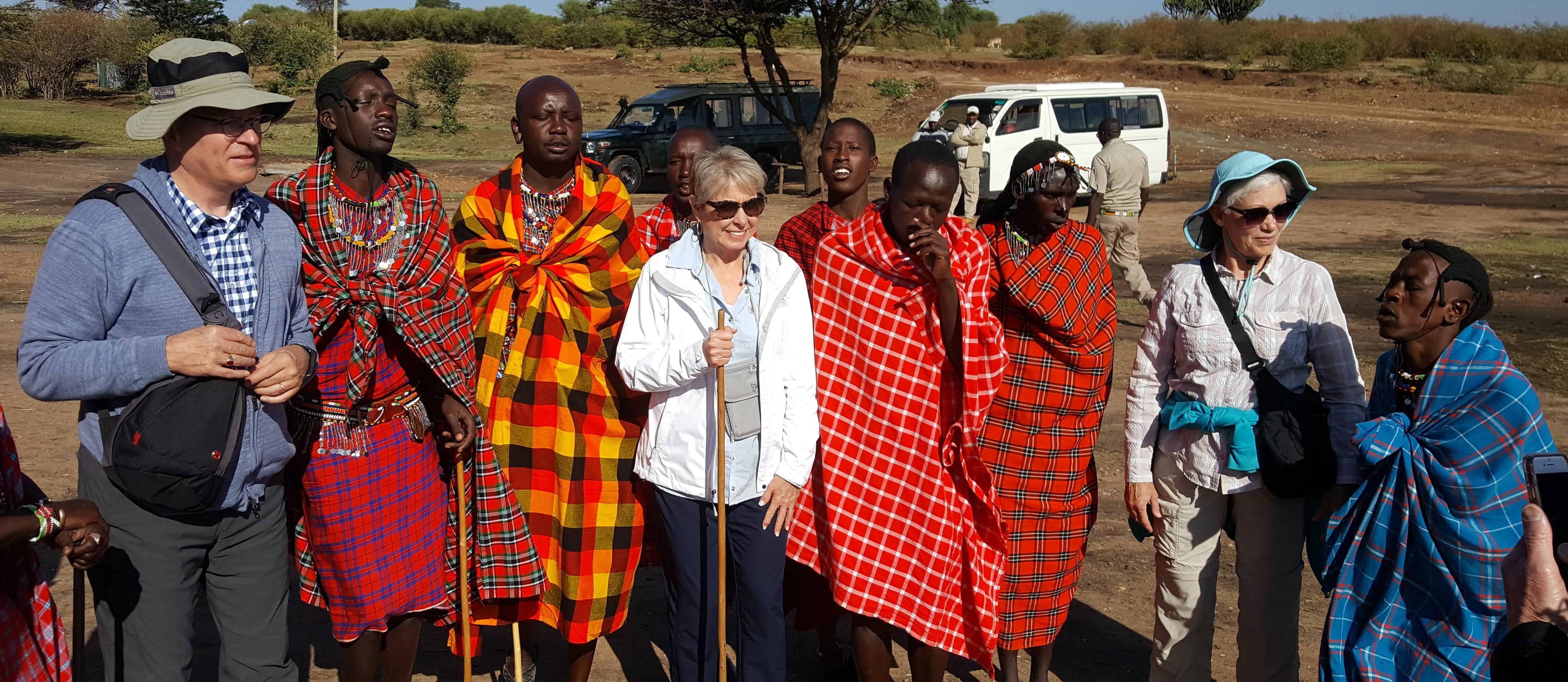
Warriors invite us to join in a welcome dance
One of the first things we had noticed as we entered Maasai tribal lands is the preponderance of red plaid shawls draped around the natives–not only at the village, but also along the roads and at the Ashnil Camp. When we inquired, Joseph explained that red is a significant color for the Maasai, representing vitality and strength. They believe that the color also affords protection against lions and other predators; no Maasai warrior will go on a hunt or into battle without wearing something red. (On the other hand, the plaid pattern has no purpose other than aesthetics.)
Like the Samburu, most of the Maasai people have shaved heads, although several men were wearing braided wigs, some decorated with colorful beads. Only warriors who have undergone circumcision and other rituals signifying entrance into manhood have the right to wear such a wig.

Pam and Nancy with the village sisters
Joseph told us that this village is home to four families, comprising 118 people. His father is the chief, and he has eight wives. It is customary for parents to select and provide the dowry for a young man’s first wife: usually about ten cows, plus other commodities such as blankets or a bag of sugar. Later, as the man accumulates greater wealth and standing in the community, he may acquire additional wives of his own choosing. Joseph told us that he is getting married in December, at age 21. As in Samburu, his mother is responsible for building a new home for him and his bride, and it is the women who will construct it. The project will take about three months, and the finished house can be expected to last for about ten years.

Medium-size branches provide the warp . . .

. . .and smaller branches the woof
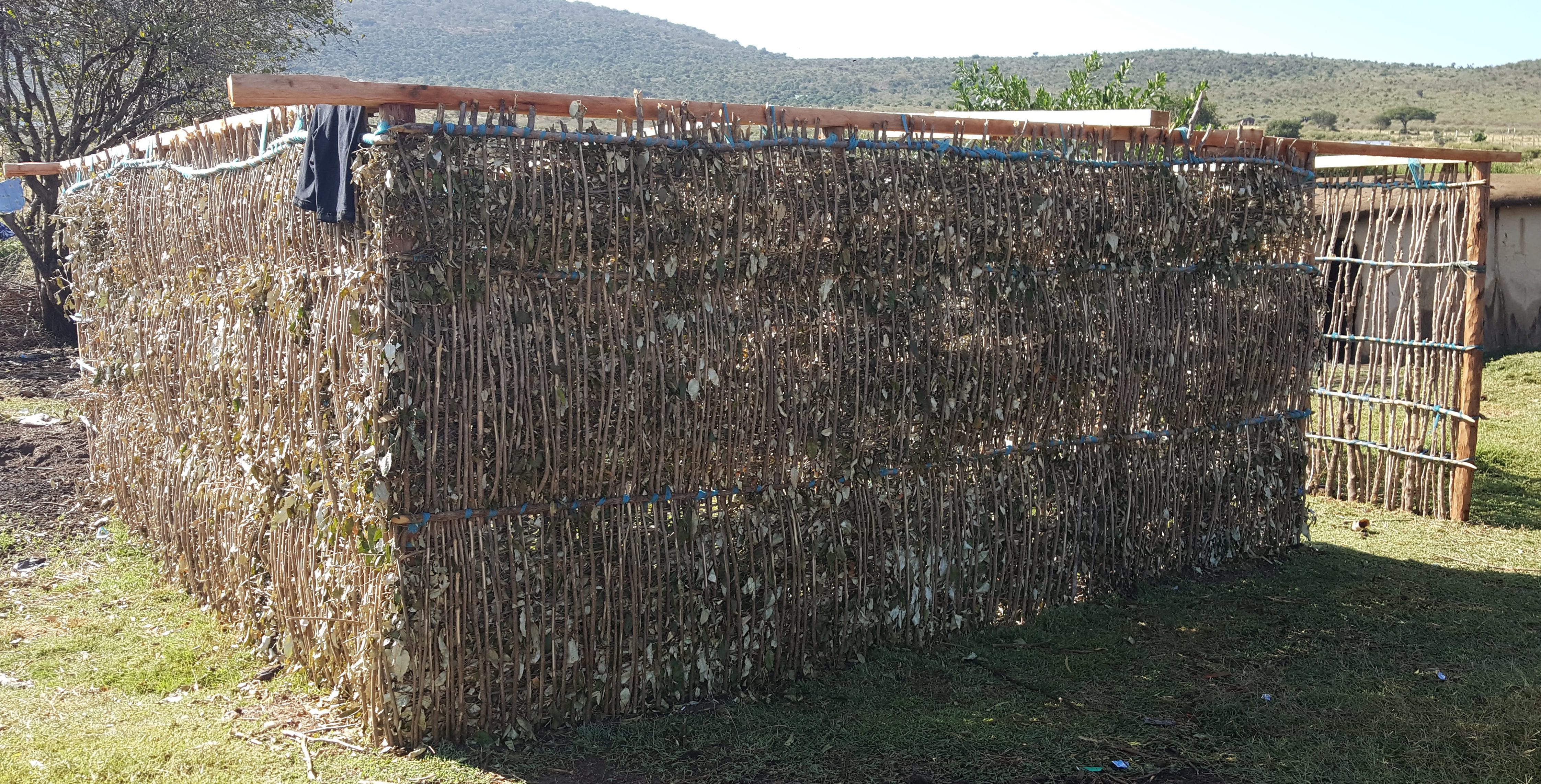
Wattle walls ready for plastering
Villagers have purposely left one house unfinished so that visitors can see how it is put together. Home design is one of the most obvious differences between the Samburu and the Maasai: while the Samburu use cardboard and plastic tarp to cover their mound-shaped stick frames, the Maasai build larger, three-room structures with wattle walls and then plaster them with clay. The roofs are covered with a waterproof mixture of mud and cow dung. Several of them had gourds growing on top. We weren’t sure whether they had been planted up there on purpose to prevent the goats from eating the produce, or whether the plants just started growing spontaneously from seeds in the dung.

Cattle au centre ville
Speaking of dung, we had to walk carefully to avoid stepping in piles the free-roaming animals had left behind, but the intriguing thing is that even though there was dung everywhere, the village did not smell at all like manure–or anything else unpleasant. We still have not determined how this could be.
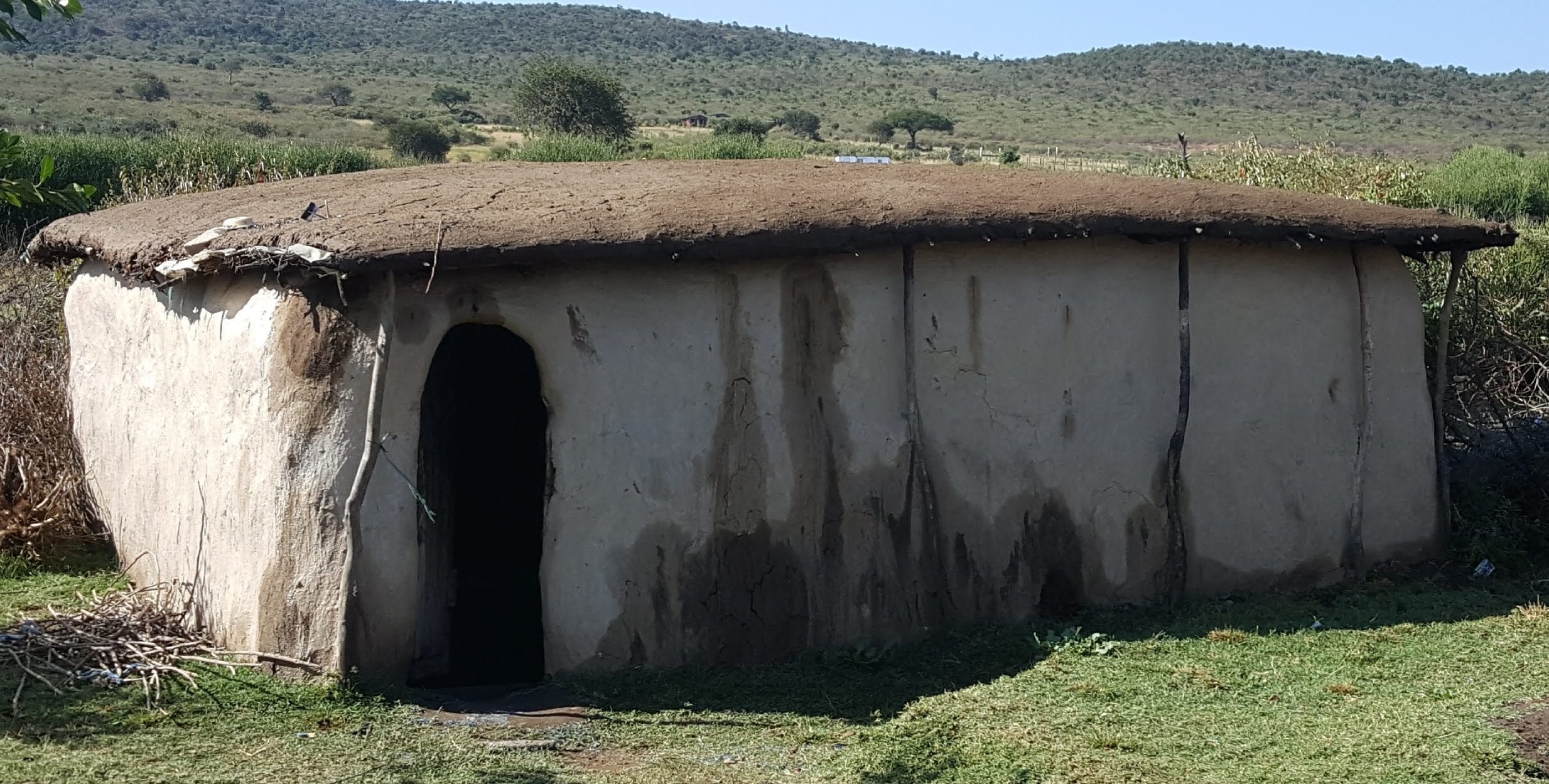
Joseph’s mother’s house
Joseph led us to his mother’s home and invited us to go inside. The doorway was uncovered but structured to give privacy to those within, like the entrance to a public restroom. Only a few small slot windows penetrated the walls, so the interior was very dim.
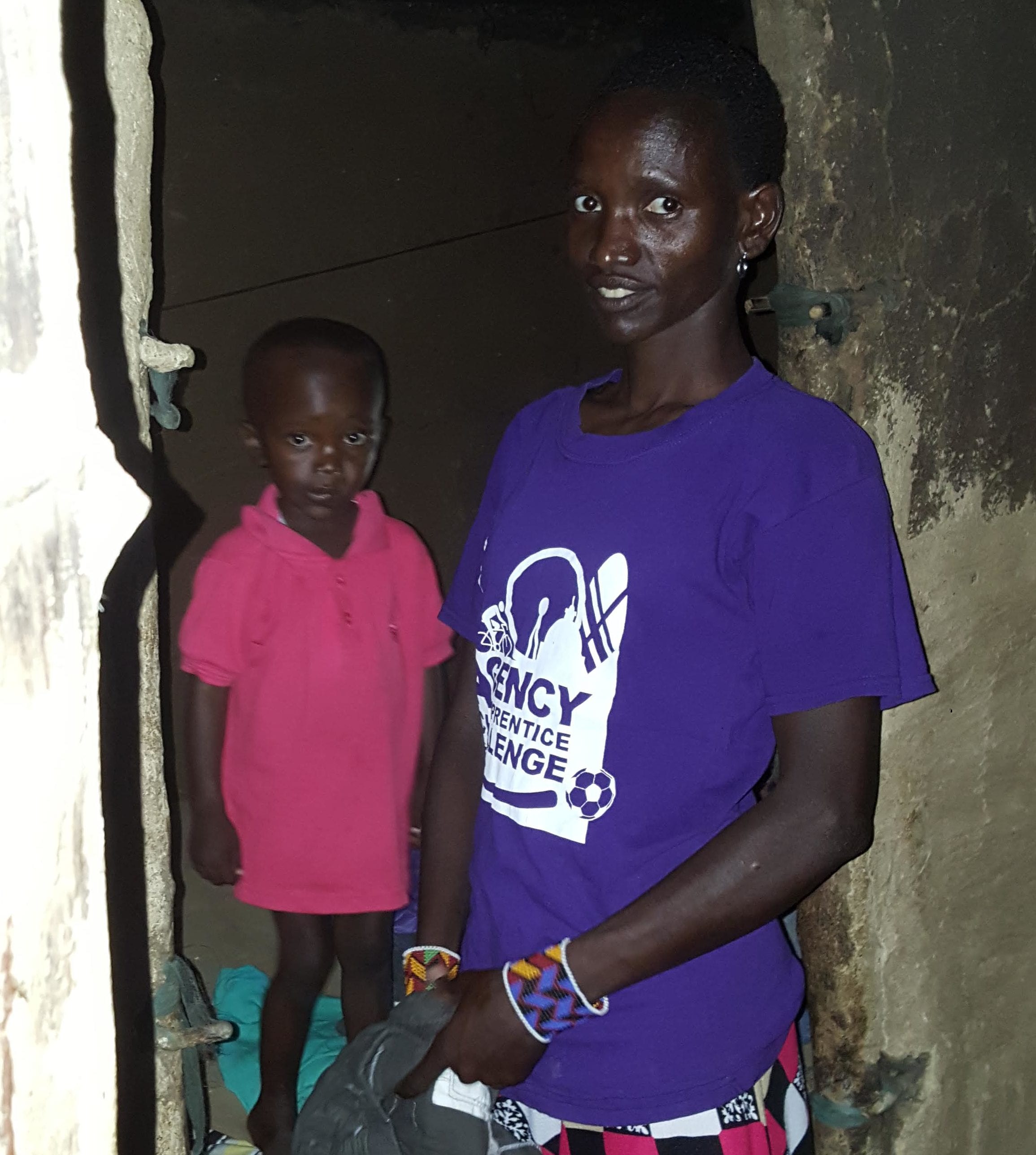
Joseph’s mother and little sister
As our eyes adjusted to the darkness, we realized that Joseph’s mother was within, helping a small child get dressed in the adults’ bed chamber. The other two rooms were larger: a kitchen/storage area centered around a small, open hearth, and a living/eating area that also serves as a bedroom for young children. As in Samburu, older children live in separate houses, segregated by gender.
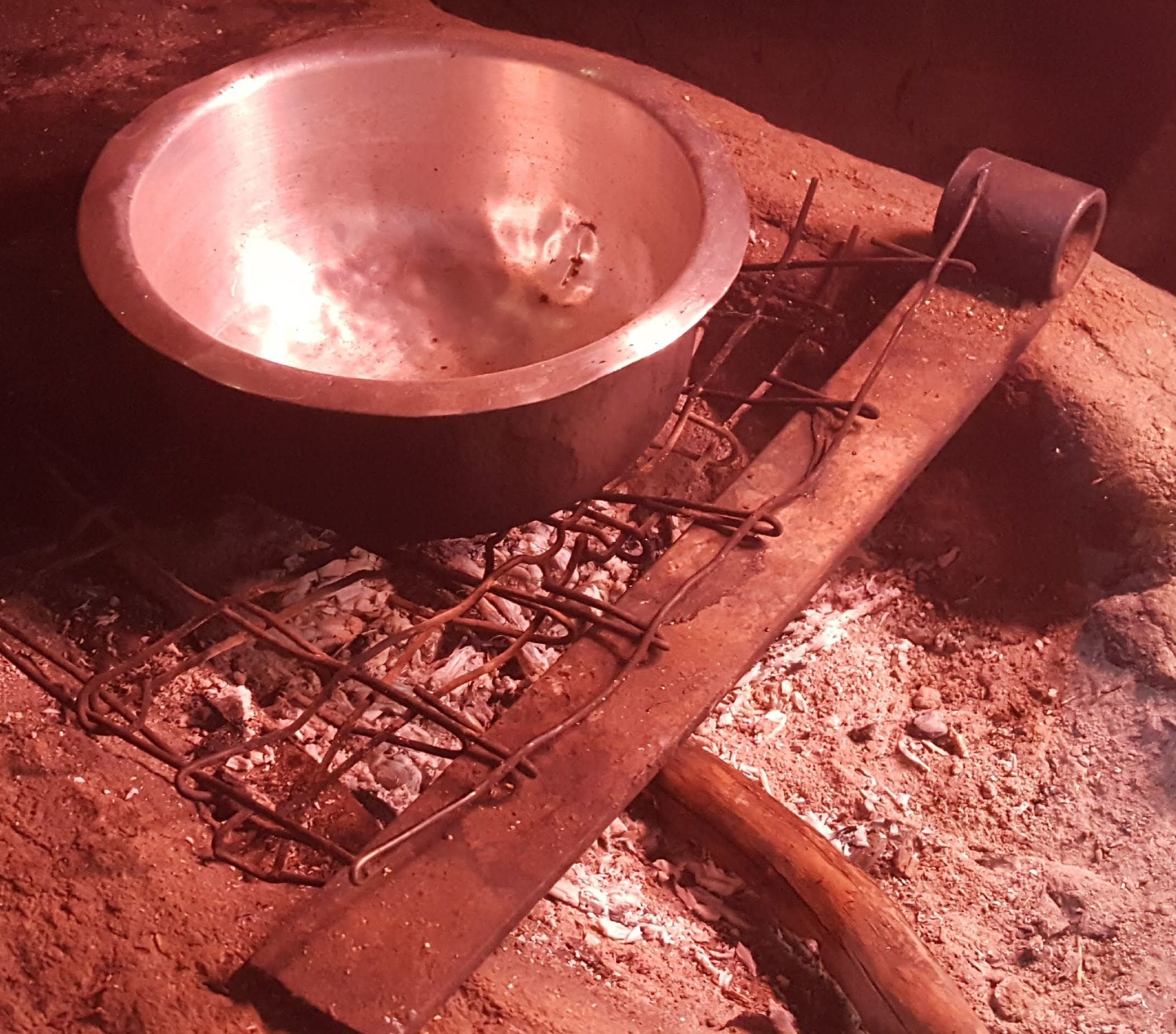
The cooking hearth; a hole in the wall above allows smoke to escape
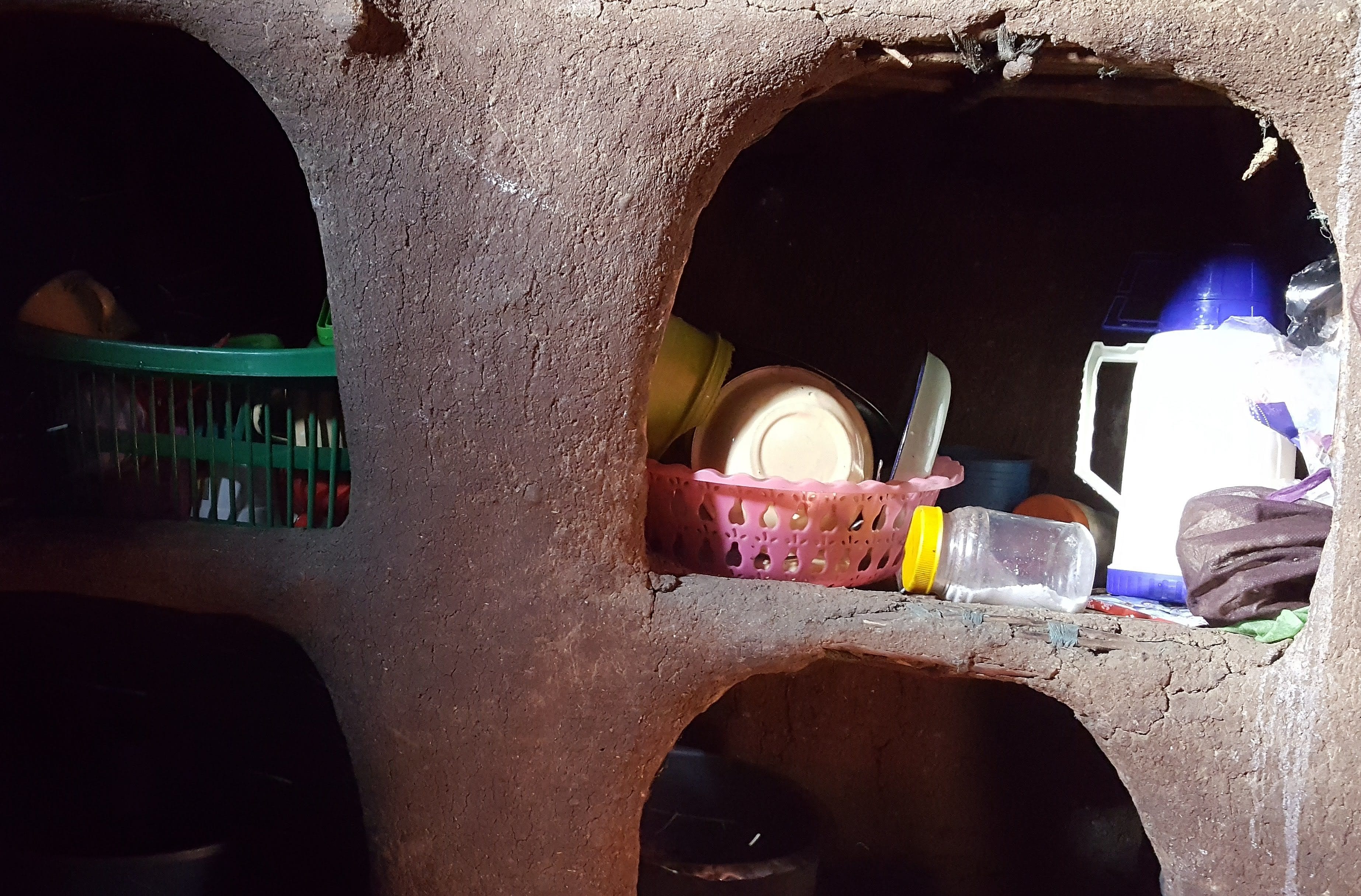
Kitchen “cupboards”

Firewood for the stove
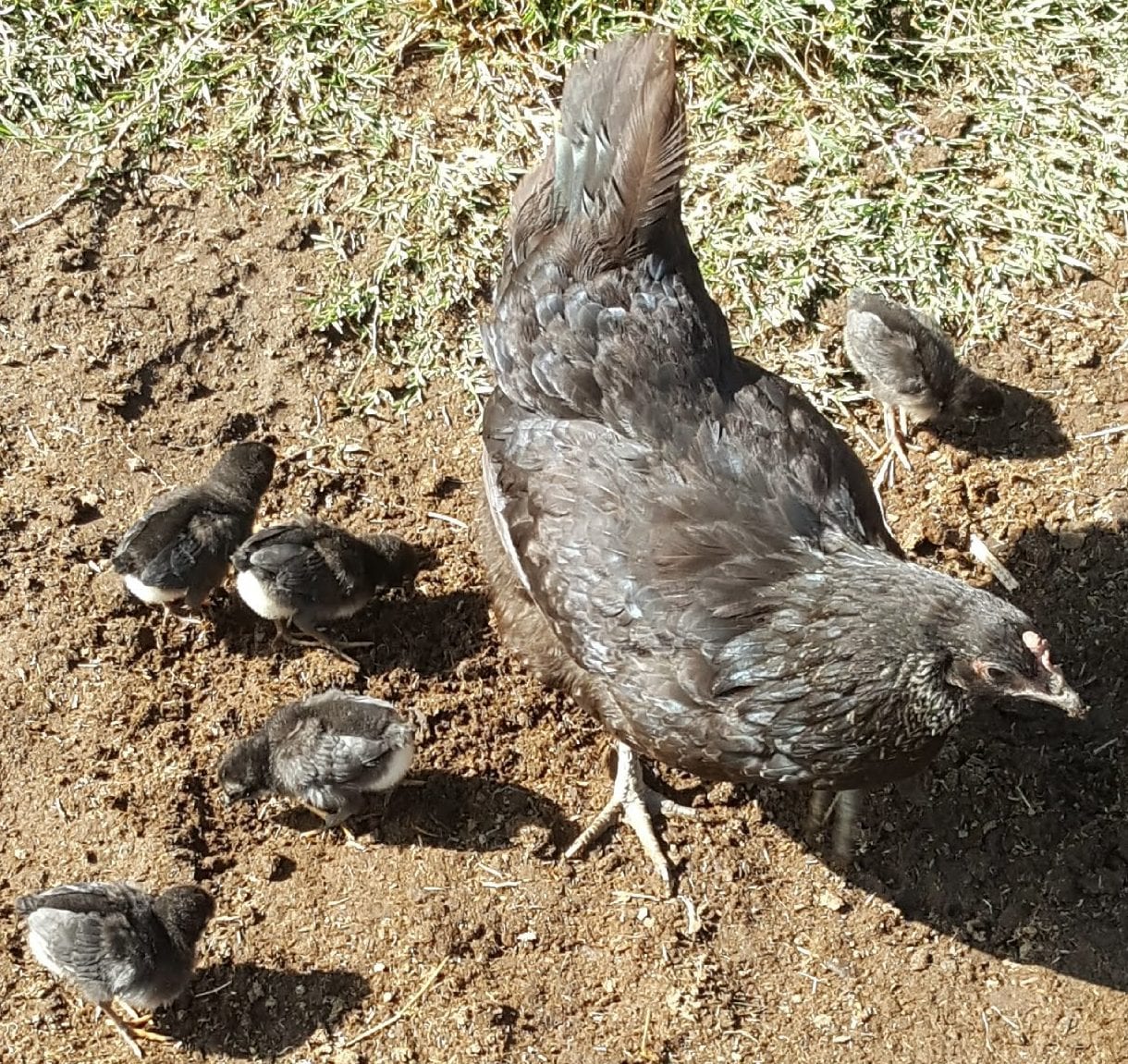
Free range chickens
The Maasai were once a nomadic tribe, roaming the vast grasslands with their livestock, but urban development has limited their range and the size of their herds. As nomads by tradition, they don’t grow crops, so their diet consists mostly of meat, blood, and milk from both goats and cows. We also saw chickens running around the village, but the Maasai don’t eat them or their eggs; they use them only for trade. Sometimes they buy rice and vegetables to supplement their diet.
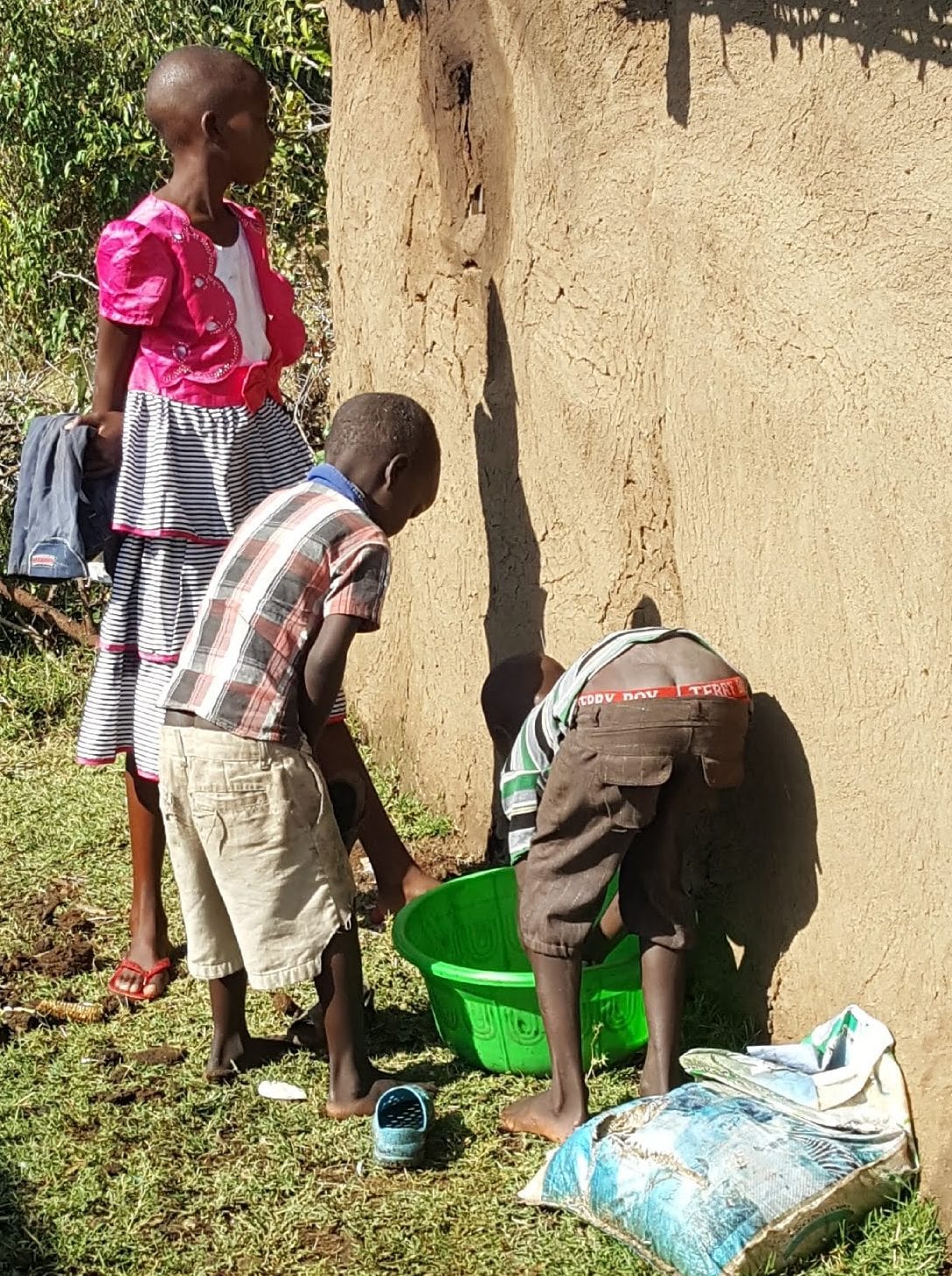
Kids take turns washing their Crocs in a plastic laundry tub
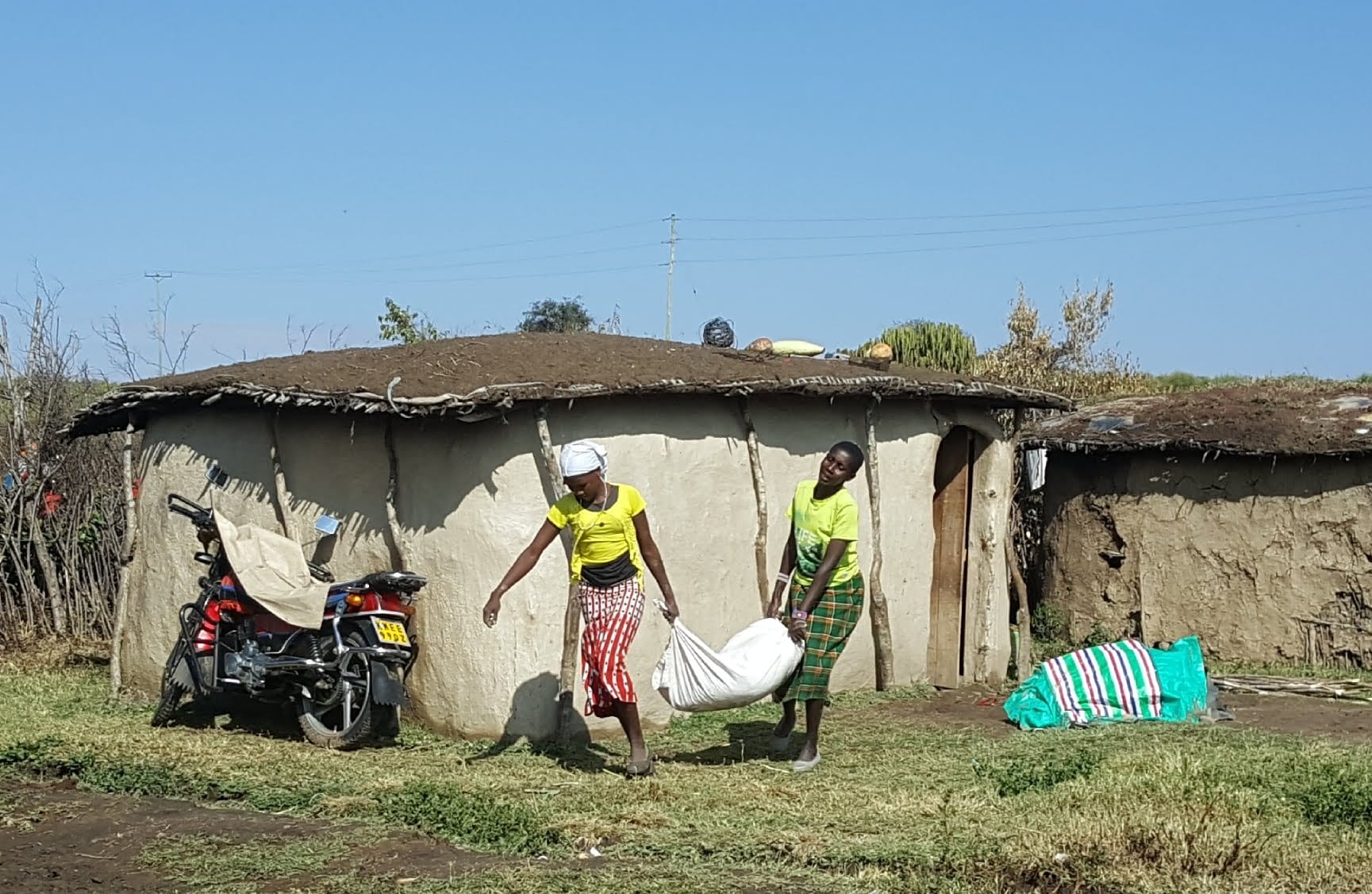
Maasai women carry a load. Notice the gourds growing on the roof of the house; we’re not sure whether they were planted intentionally or grew spontaneously from seeds in the mud-dung plaster. The motorcycle was the only vehicle we saw in the village
Today we saw another fire-starting demonstration; the technique was basically the same as at the Samburu village, but here the tinder of choice was dried plant matter instead of dung.
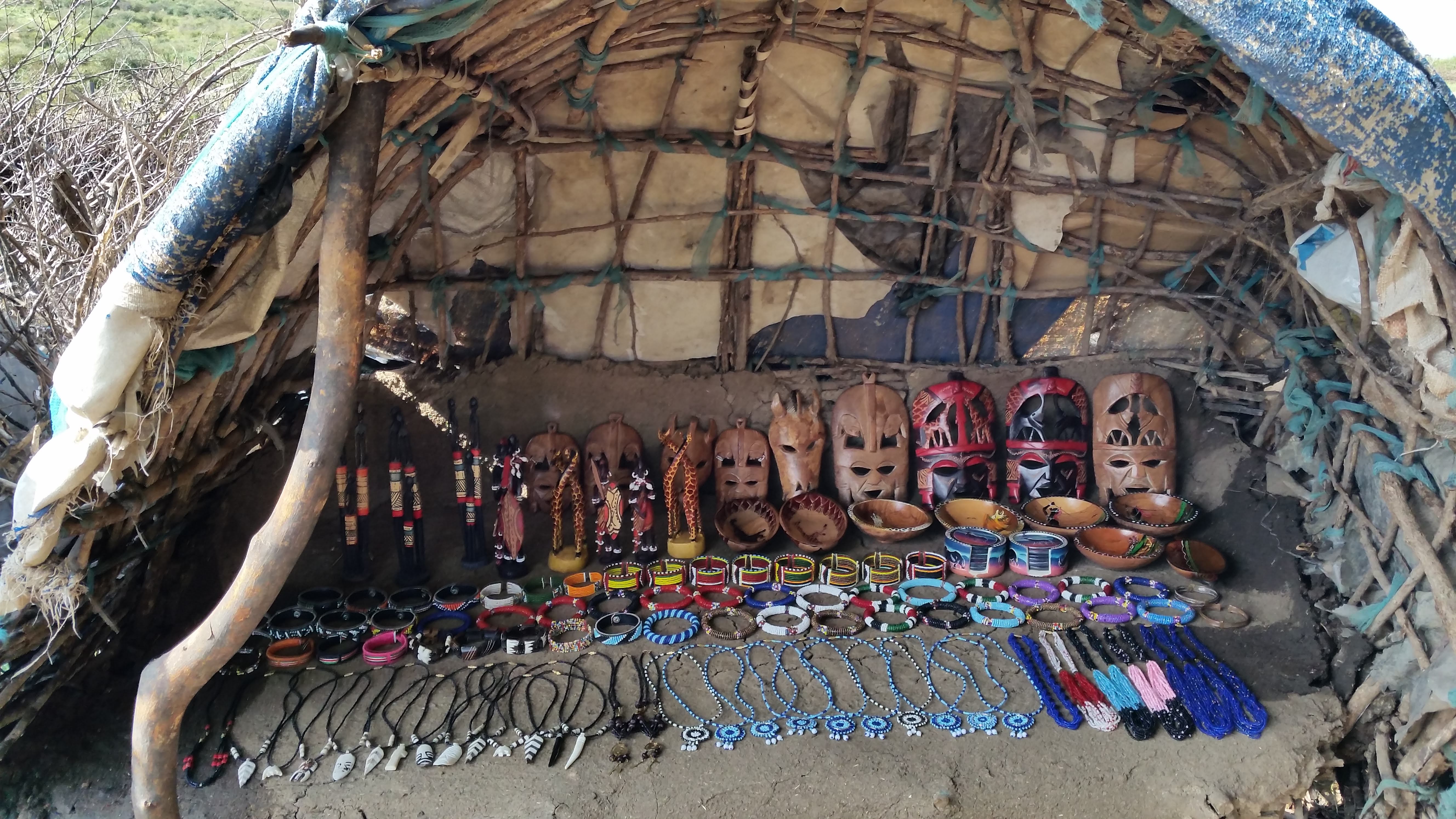
Merchandise on display
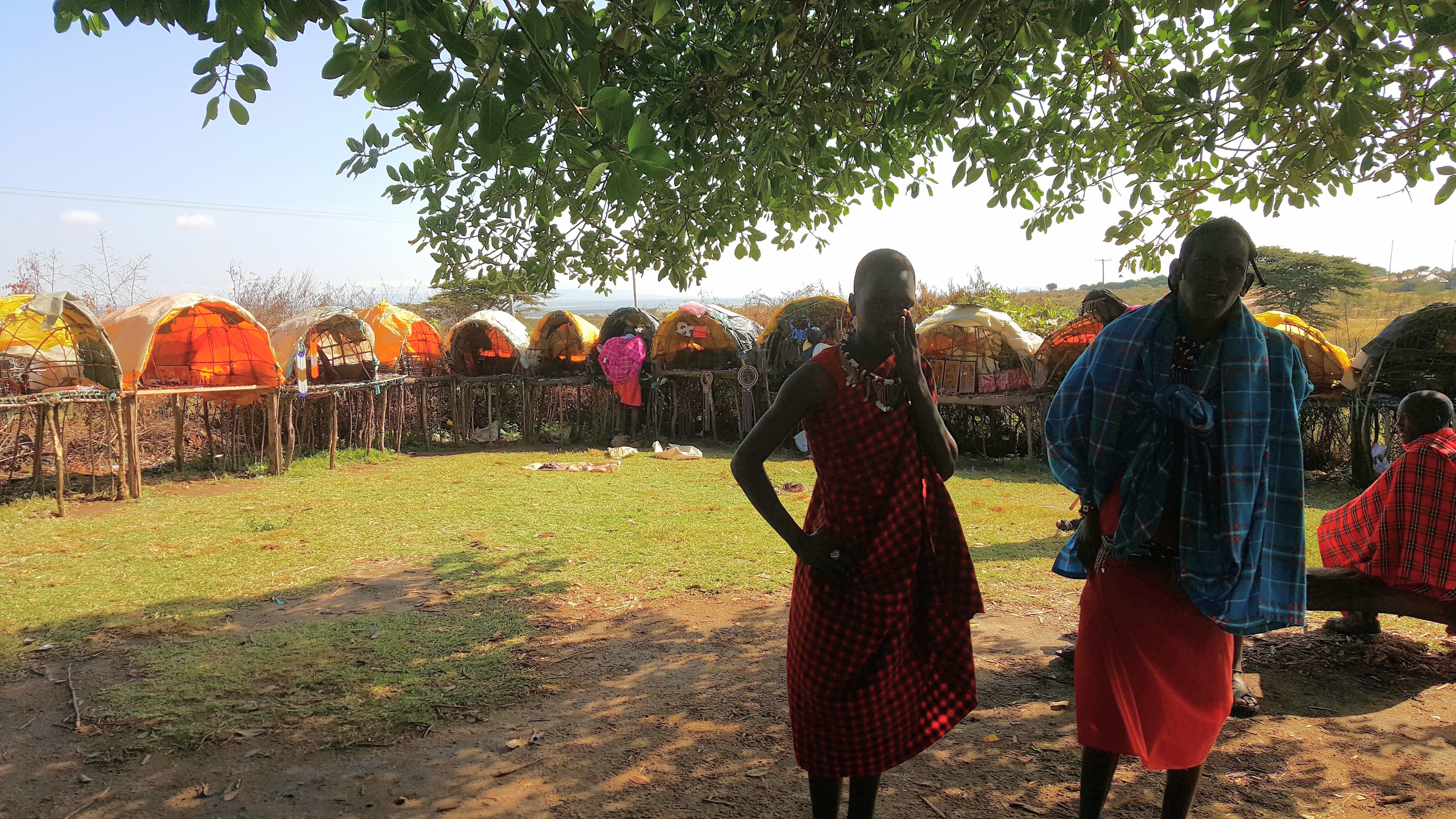
The village market
After touring the village for about forty minutes, we had seen just about everything the villagers were willing to show us–including hundreds of wood carvings, beaded bracelets, and other trinkets on display in their marketplace. Having already purchased a number of such items elsewhere, we took a quick look around, and then said thank you and goodbye to our hosts.
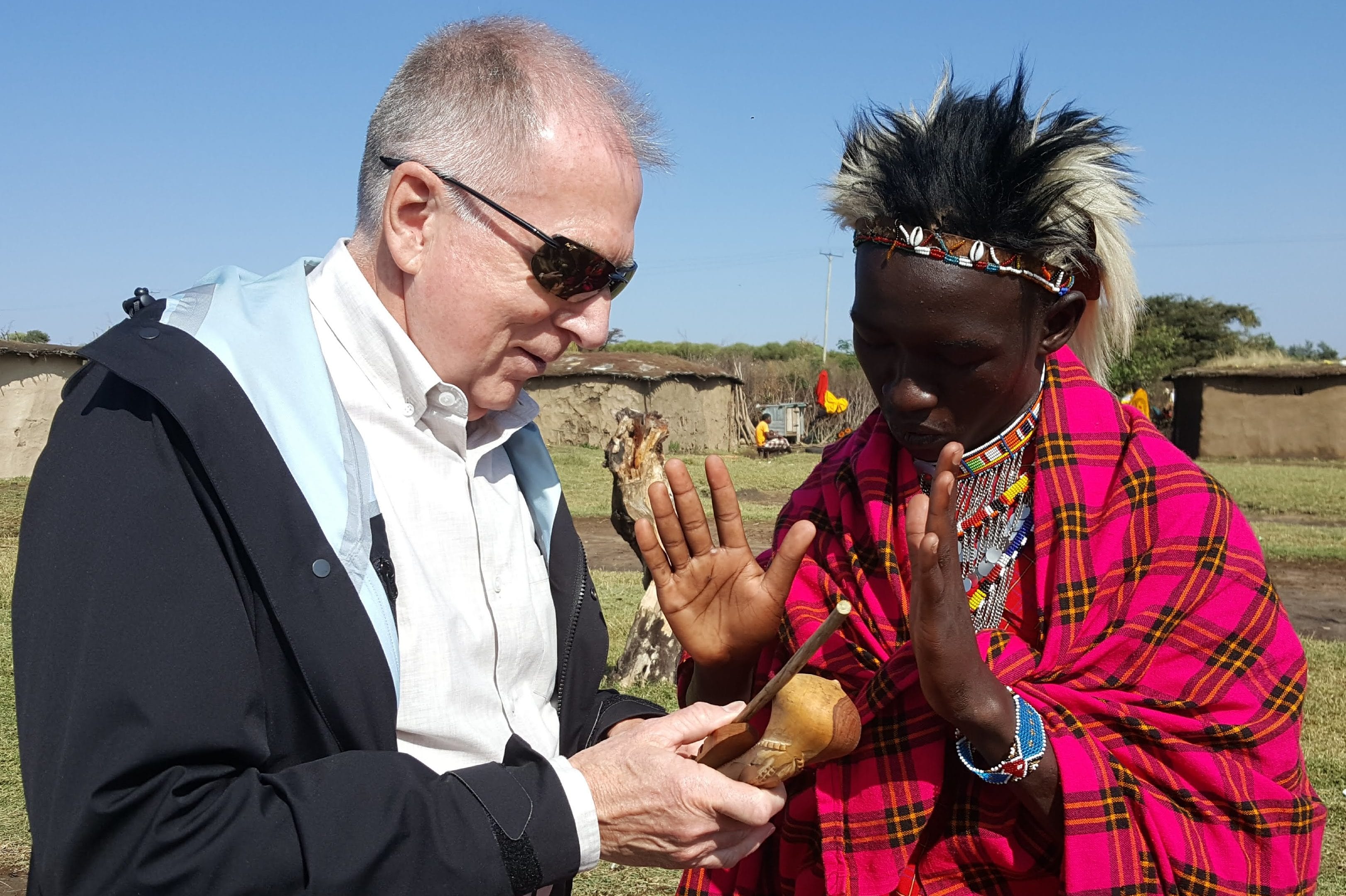
A Maasai tribesman tries to convince Eric that he needs to buy a “talking stick.” This is not a stick that talks, but a ceremonial object passed from hand to hand during tribal councils to designate who has the right to speak at the moment
A few miles from the village, we had to wait for several minutes while a dump truck unloaded some rocks at a bridge construction site next to a shallow creek. The workers were African, but most of the safety vests they were wearing were printed with Chinese characters.
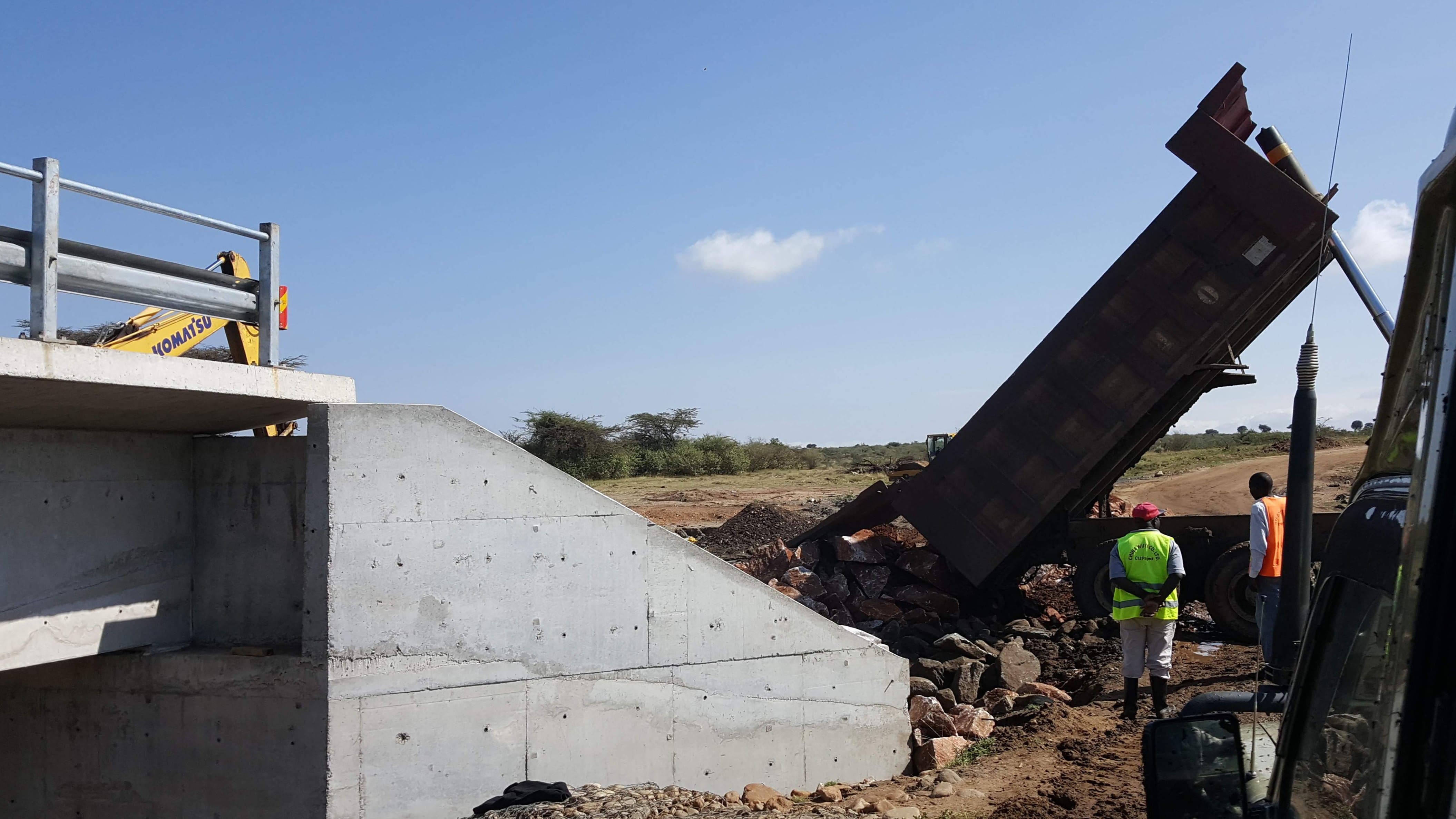
Bridge under construction
This was only the first of several Chinese-funded road improvement projects we would see today–although on this particular road, the partially completed bridge was the only visible improvement, and we had to travel probably ten more miles before we reached paved highway. After so many hours jolting over rutted tracks and skidding through mud during the past few days, the smooth, dry asphalt surface felt absolutely heavenly!
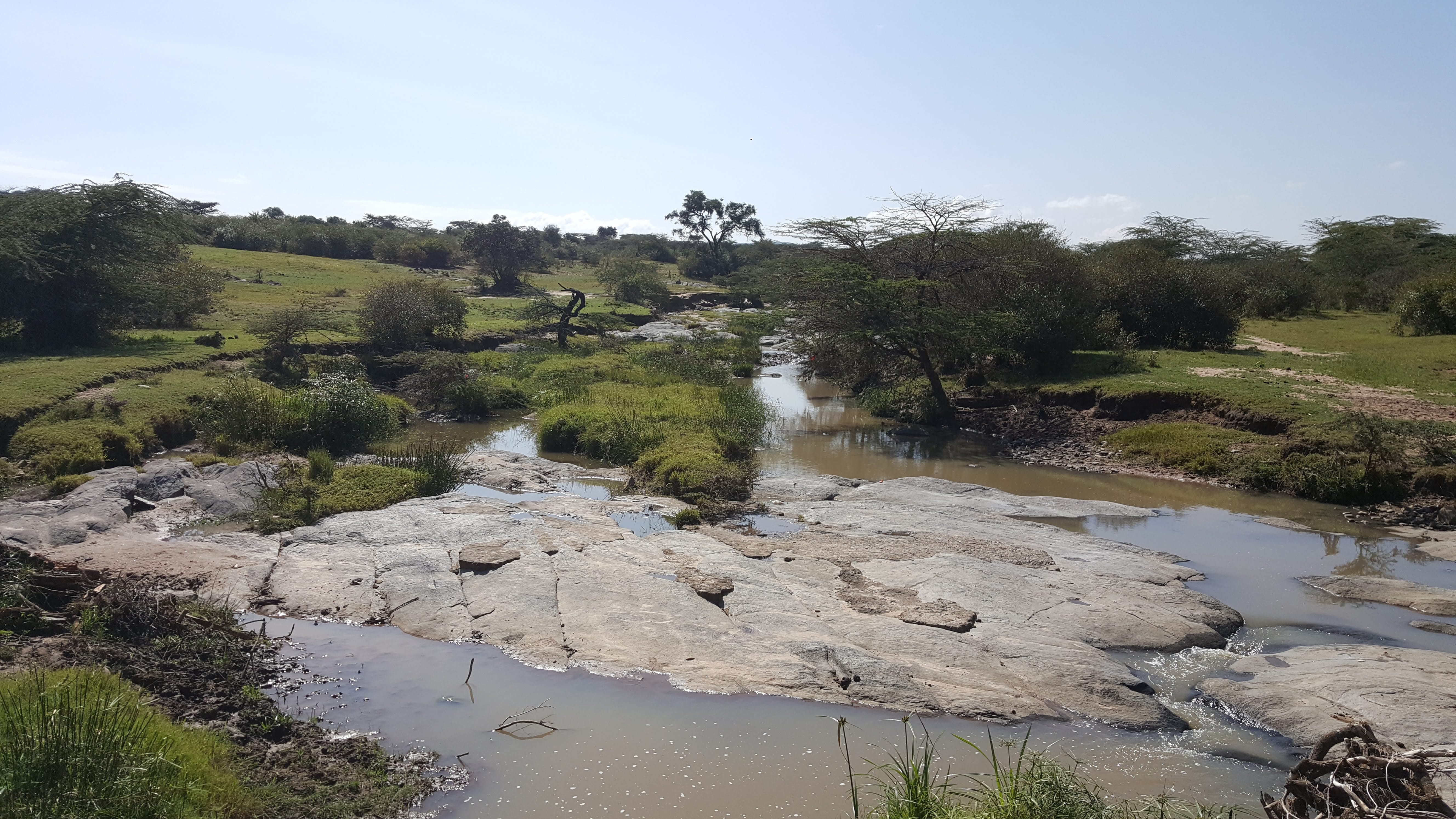
Shallow creek over which the bridge was built
As we sped along the highway, we passed several herdsmen with their cows and goats, and also a few vervet monkeys searching the ground for discarded scraps of human food. We also began to notice other Discovery XA Land Cruisers pulling alongside, occupants waving.
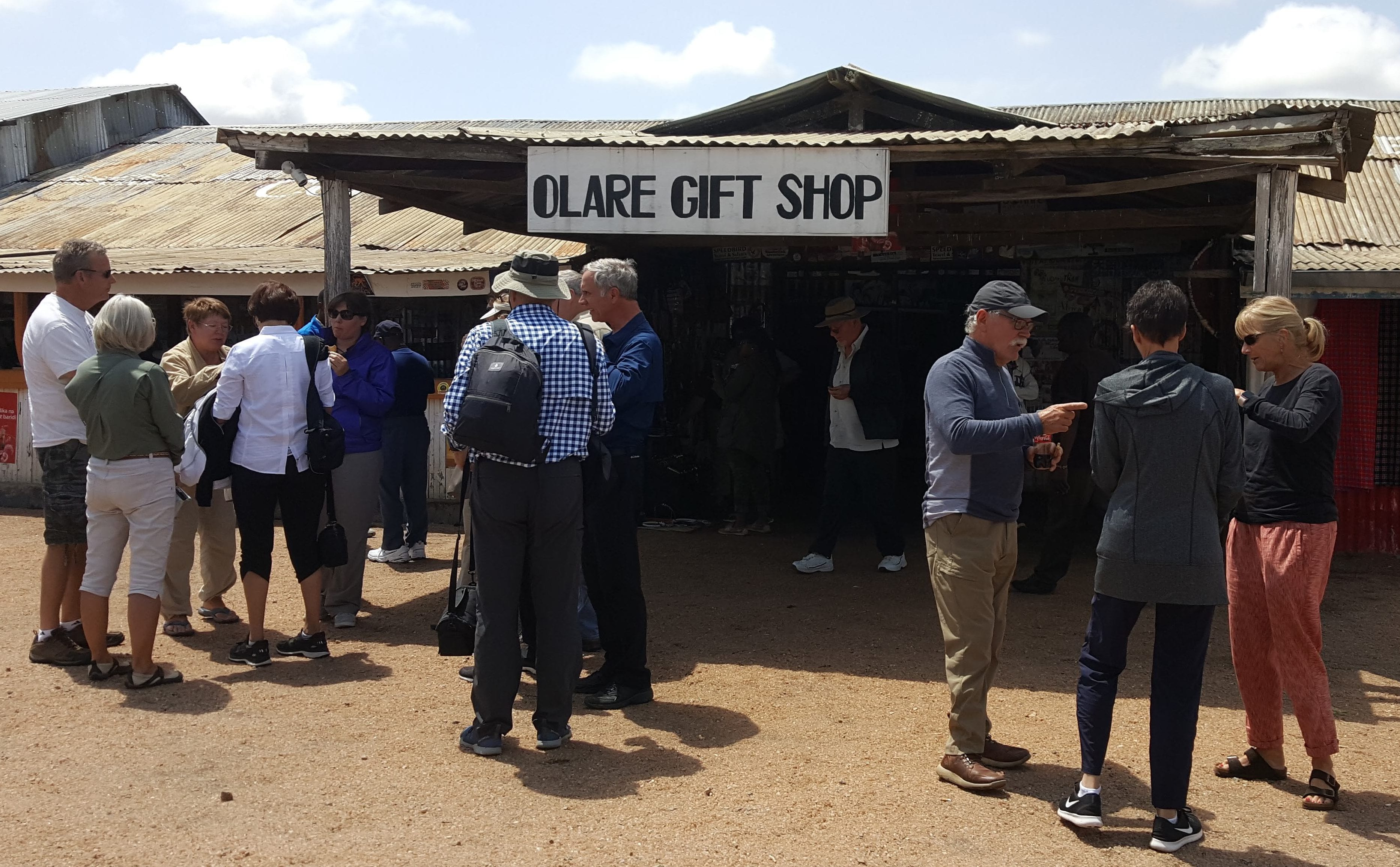
We met the rest of our group at the Olare Gift Shop

Keys to the washroom
A little after 11 a.m. all six vehicles pulled into the parking lot outside the Olare Gift Shop and Cafe, and the discharged passengers hurried to find the washroom. As we waited for our turn in the toilets, we told those who had chosen not to visit the Maasai village about our experience, and asked them about their last game drive. The “Jackson Five” had hoped to learn more about the culture of the local people; the others had hoped to see a herd of wildebeests stampede across the Mara River. Ours were the only expectations that were met this morning.
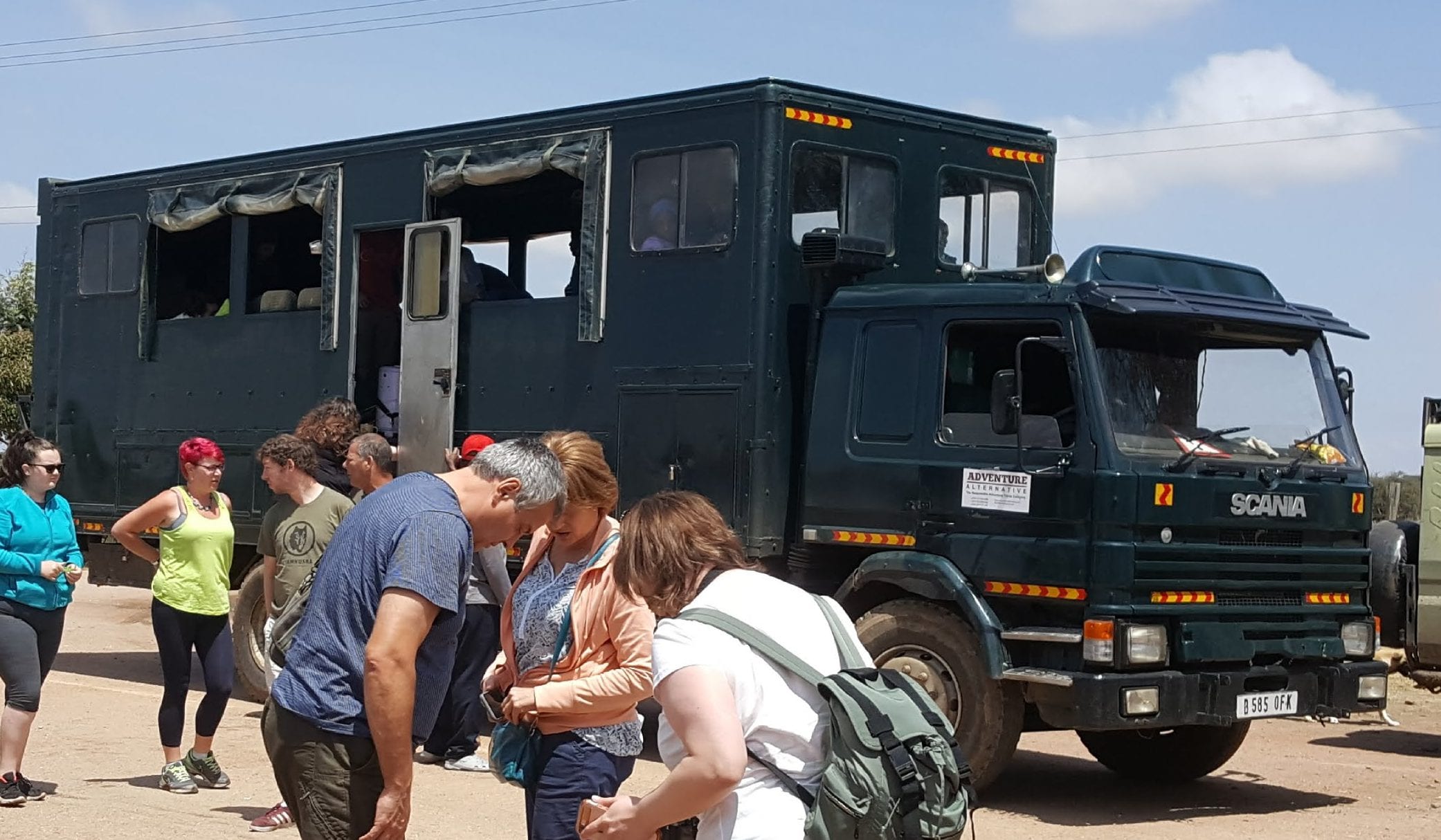
Another safari company’s “party wagon”
We were glad that we arrived at this stop ahead of a very large tour vehicle that in other circumstances might better be described as a “party wagon.” It held probably twenty passengers, was tall enough to stand in, and was equipped with some big windows for wildlife viewing. However, we couldn’t help but wonder how anything that size could travel over anything but the widest, smoothest roads, and thus wondered whether the tourists riding inside would ever get to see the kinds of animals we have seen this week.
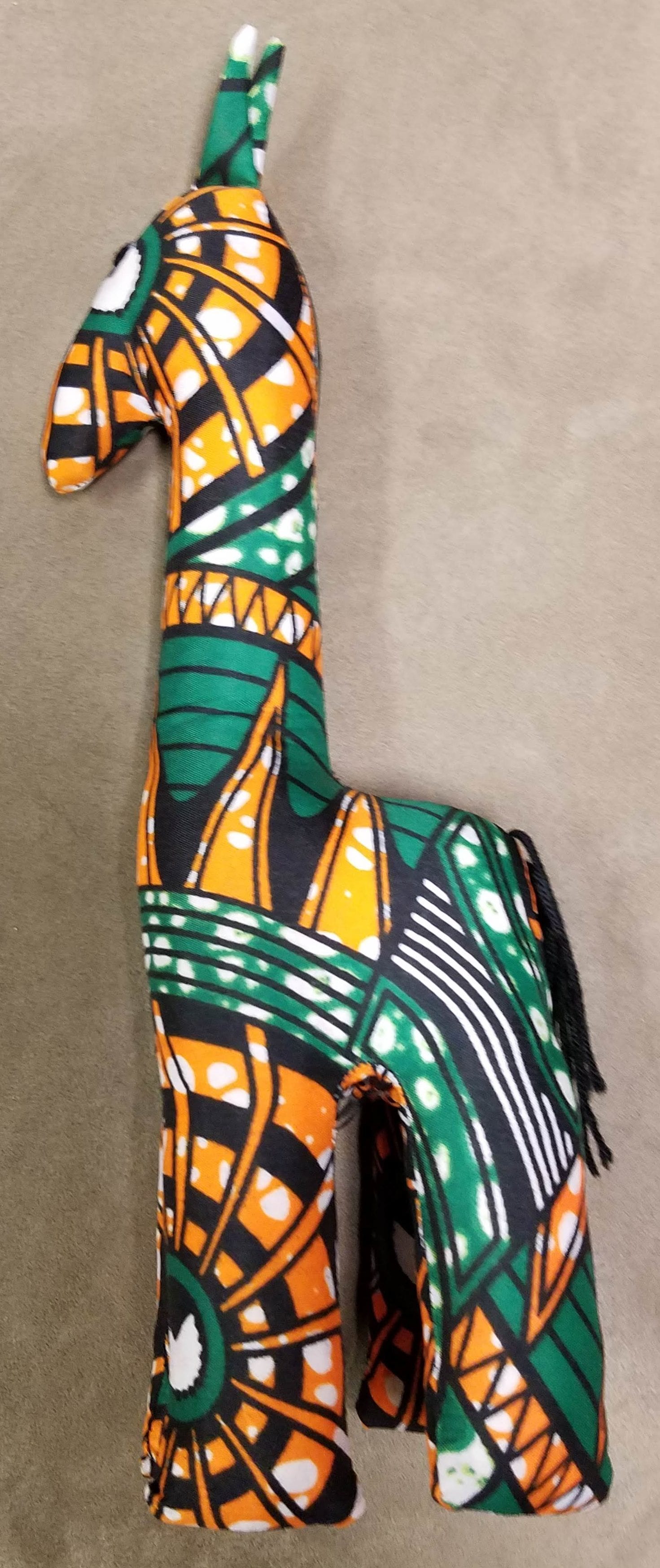
Toy giraffe
Our group had about half an hour at the gift shop to look at the merchandise and buy snacks: chips, cookies, soda, and some kind of hot fry-bread. (Michael and Nancy did not try any, but it looked like what we who grew up in the western U.S. call “scones.”) While others were eating, Nancy was focused on finding a gift for our newest grandchild, due to be born in September. She selected a stuffed toy giraffe, and then had to begin the haggling process. By strategically walking away a couple of times, and then getting Michael involved at the end, we were able to convince the salesman to sell it to us at less than 30 percent of his original asking price.
All week we have tried to switch vehicles and companions frequently so that we can have a chance to get better acquainted with different drivers and tour members in addition to visiting with old friends. As we got ready to leave this pit stop, we arranged to ride in Amos’s Land Cruiser, but so did Pam and Eric–so we ended up together again. Michael remembered to retrieve our lunch from the cooler in Jackson’s vehicle so we could eat our yogurt, vegetables, and rolls while we continued our journey.
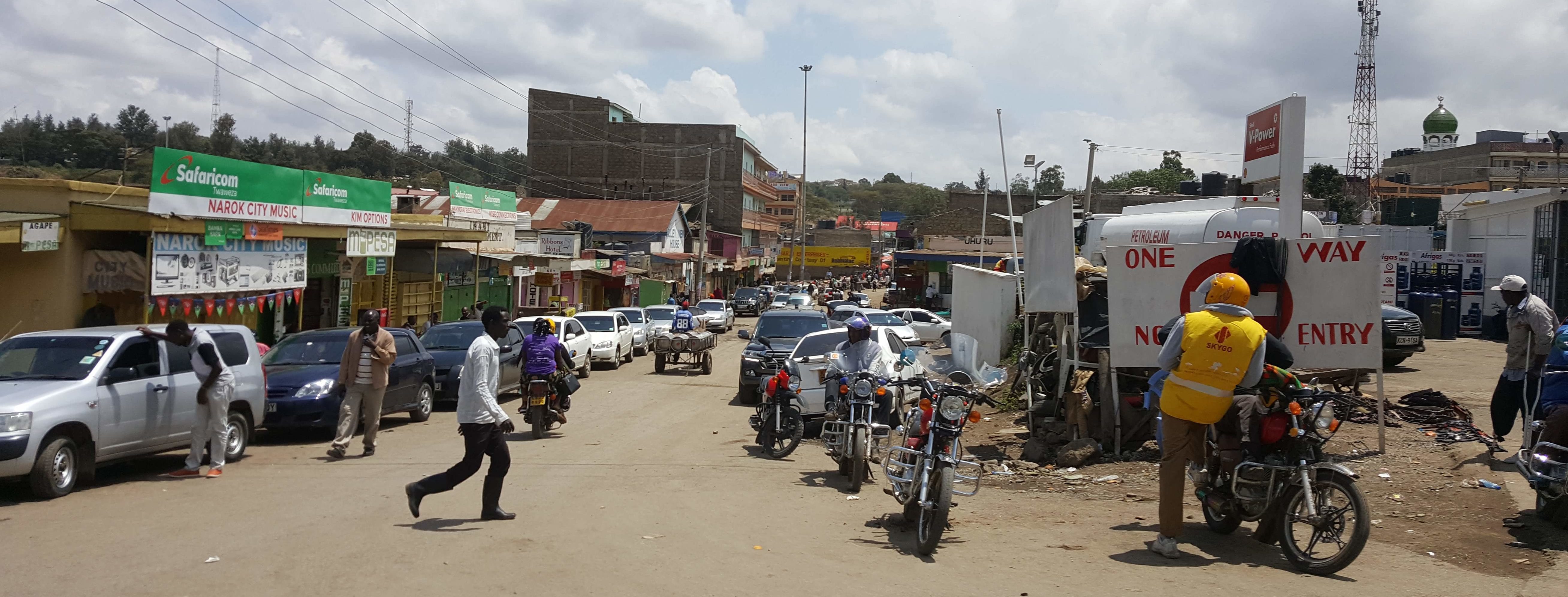
Narok business district
At Narok, a commercial town of about 40,000 located sixty miles west of Nairobi, we turned onto a highway; fifty miles later, we turned onto the main route linking Nairobi and Mombasa with Kampala, Uganda’s major port on Lake Victoria. Despite the smooth pavement, we couldn’t move very fast due the number of big, slow trucks taking up more than their share of the road. (An unexpected advantage of getting behind such a vehicle is that we could get better photographs out the windows.) Amos pointed out Mount Longonot to our west, a 9,000-foot volcanic peak whose name comes from a Maasai word that translates as “the mountain with many steep ridges.”
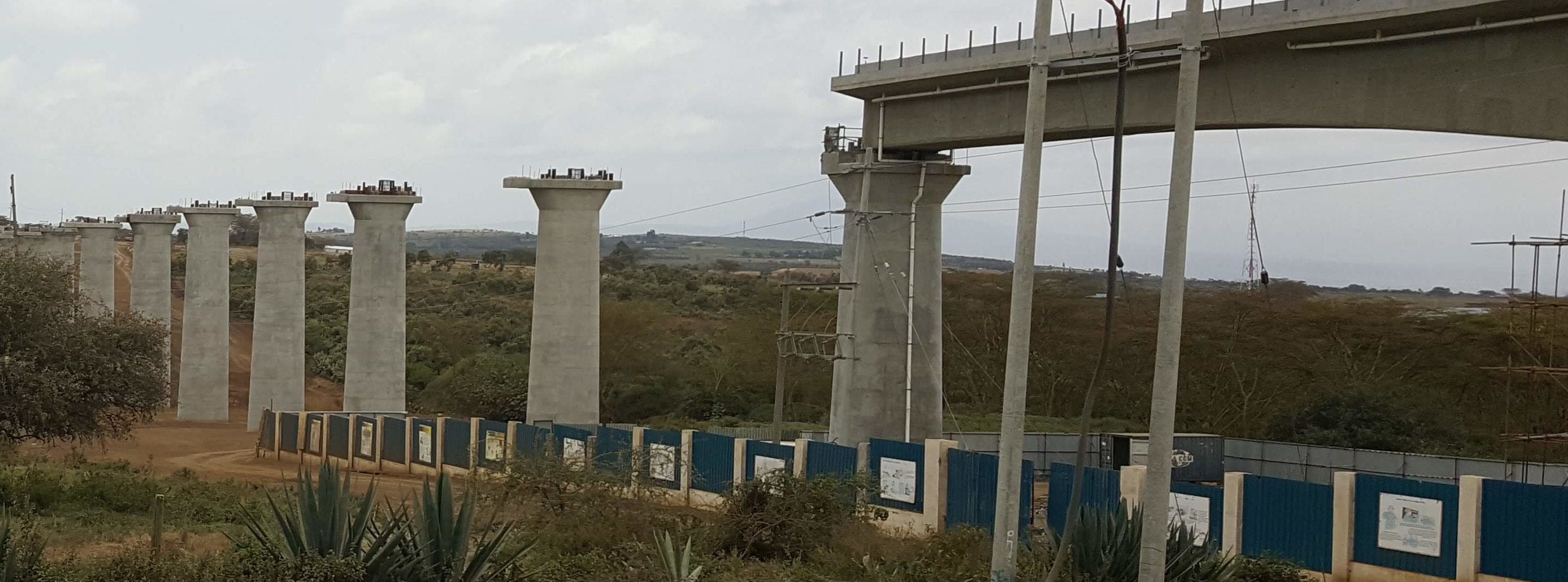
China is aiding construction of a high-speed rail line between Nairobi and Kampala, Uganda

Mount Longonot. The dormant volcano is within a national park and is popular with hikers
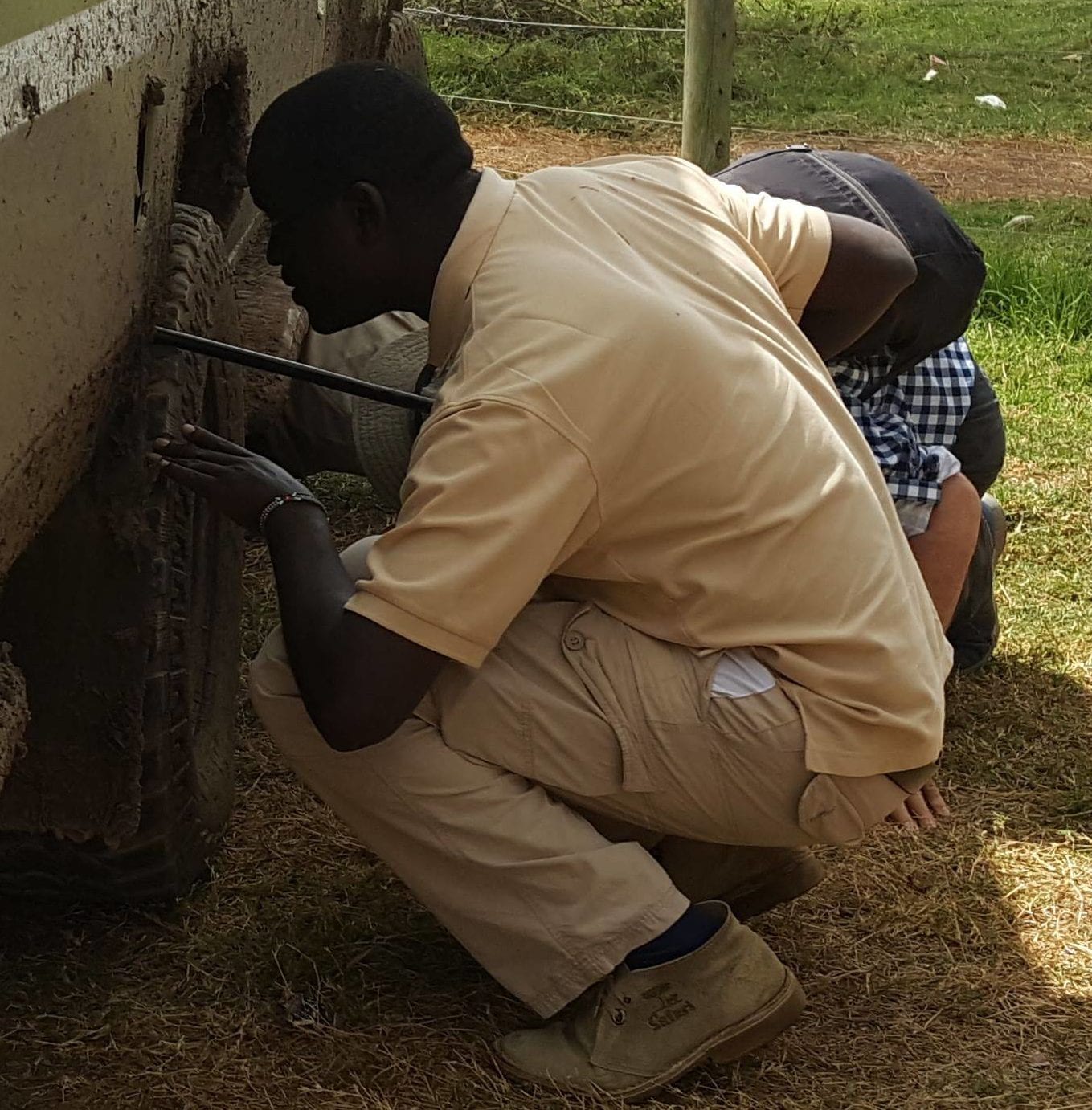
Amos and Michael search for the stowaway
At about 2:00, Amos pointed out the glimmer of Lake Naivasha in the distance. This bird sanctuary and resort was our destination for the afternoon, and we were looking forward to taking a boat tour there. At about the point where we turned off the highway onto the road toward the lake, we began to hear mongoose squealing coming from under the vehicle once again. Apparently, our stowaway had been too traumatized to leave its hiding place before we left camp this morning, and now we had transported it more than 150 miles from its burrow. (It must have felt as bewildered as the boy in the movie Lion, who was accidentally whisked across India after falling asleep in an empty train.) When we got to the lake and parked, Amos searched under the vehicle once again but still couldn’t figure out where the mongoose had secreted itself.
Lake Naivasha is a freshwater lake, fed by the Malewa and Gilgal Rivers and located at the highest elevation of the Kenyan Rift Valley. Covering 54 square miles and with an average depth of 20 feet, it is much smaller than Lake Victoria and used mostly for recreation–although it offers a plentiful catch to local fishermen, and the underground streams that flow out of the lake and through the volcanic layers under Mount Longonot provide geothermal energy to generate power for much of Kenya.

Ready to launch
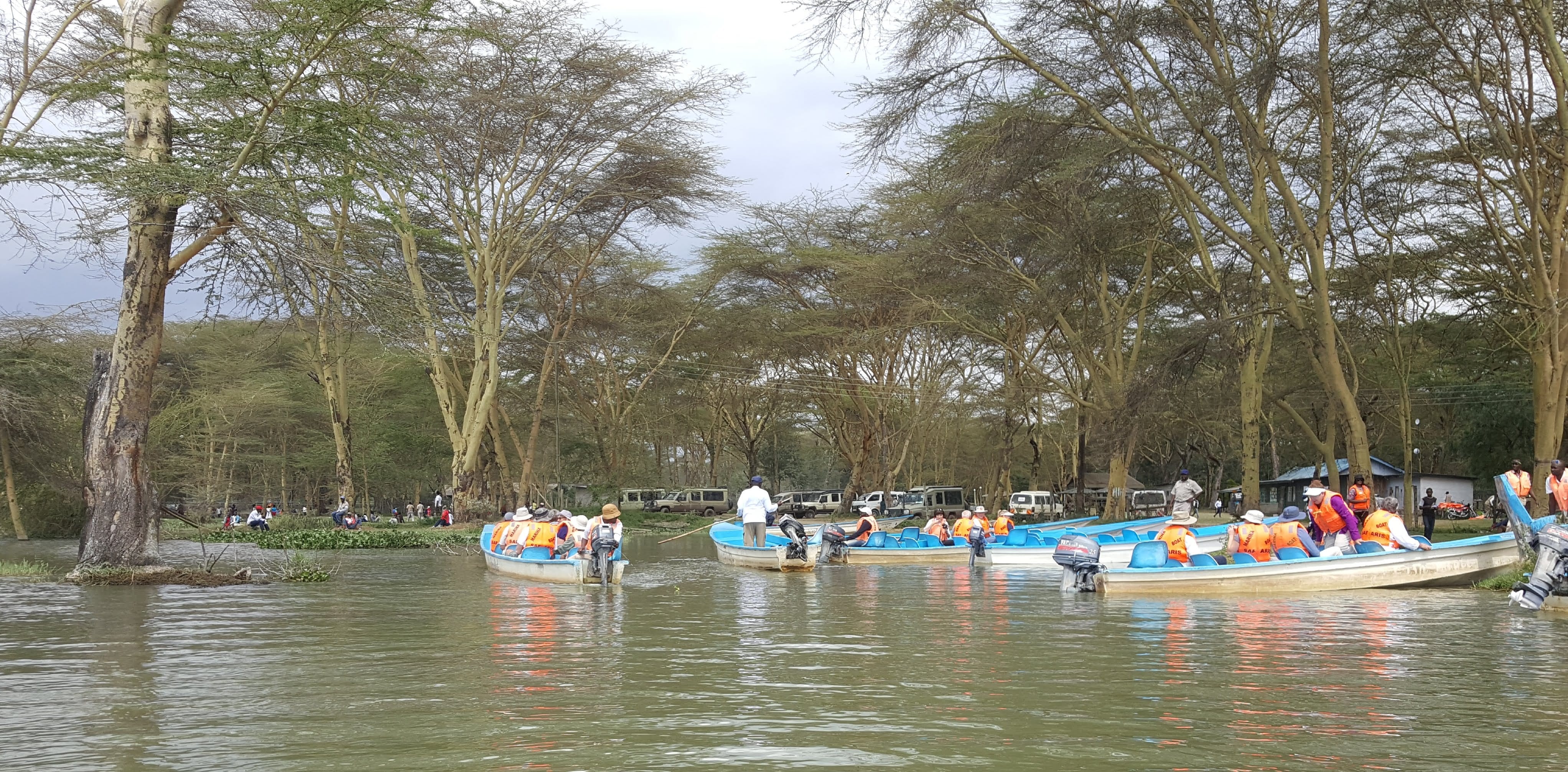
The dock area at Lake Naivasha
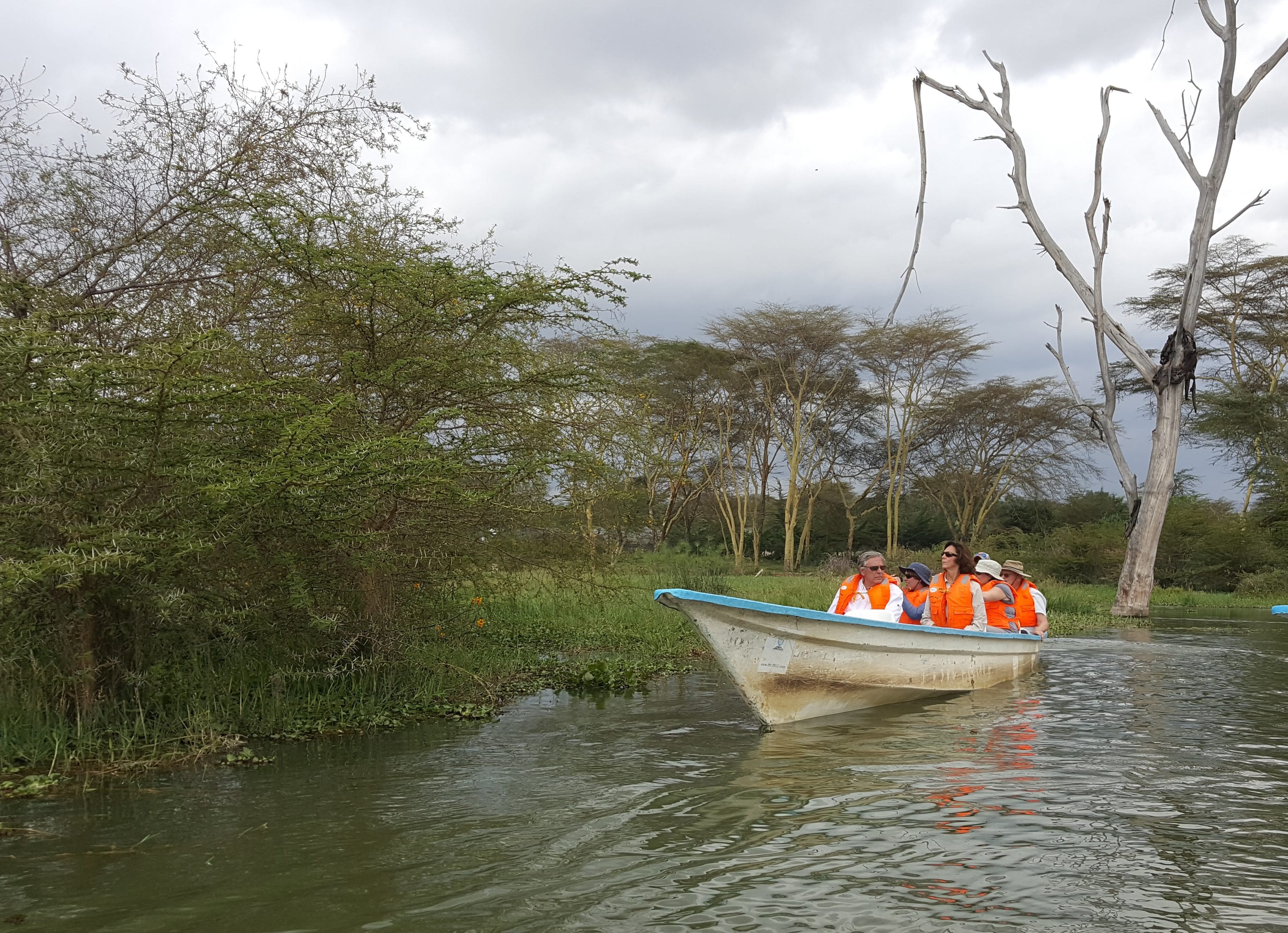
Exploring inlets
When we heard that we would be taking a boat tour on the lake, we had pictured going aboard a vessel capable of carrying the whole group. Instead we climbed into several small cutters, each equipped with an outboard motor and seats for six passengers. We chose the boat with the oldest-looking guide, which turned out to be a good decision because he seemed to really know his stuff. He pointed out dozens of different bird species as he piloted the boat along the shoreline and maneuvered it so that we could be in the best position to photograph the wildlife.
In addition to the birds, Lake Naivasha is home to a lot of hippopotami, but remembering what had happened to the zealous Chinese photographer a couple of weeks ago, we kept our distance from them.

A crew of fishermen were setting a net as we motored by. Their catch consists mostly of tilapia and carp, but may also include black bass and mackerel
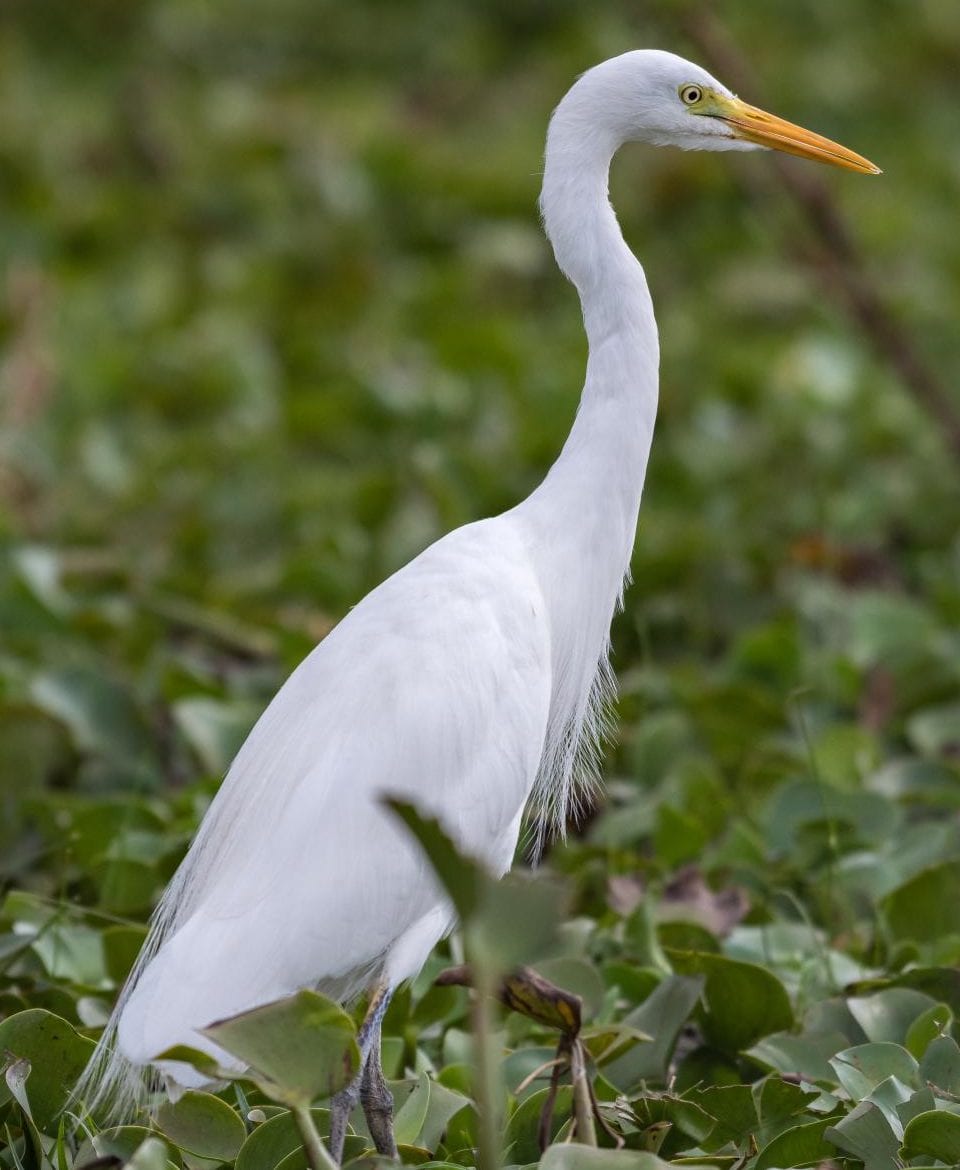
Great white heron
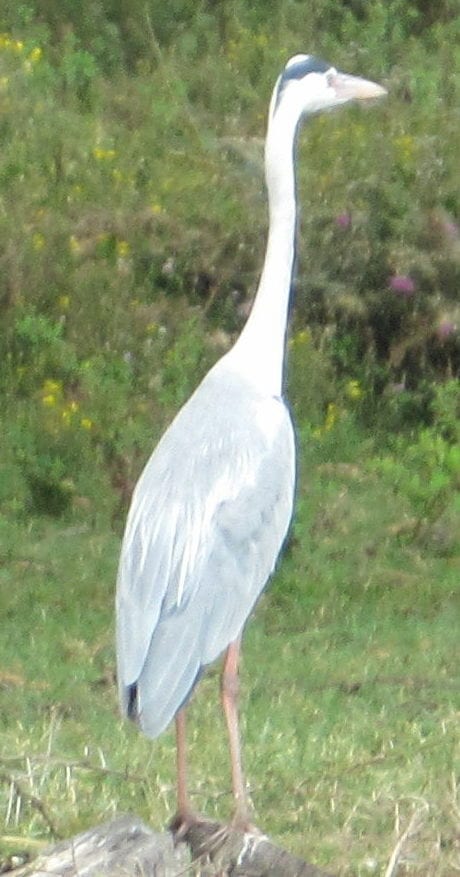
Grey heron
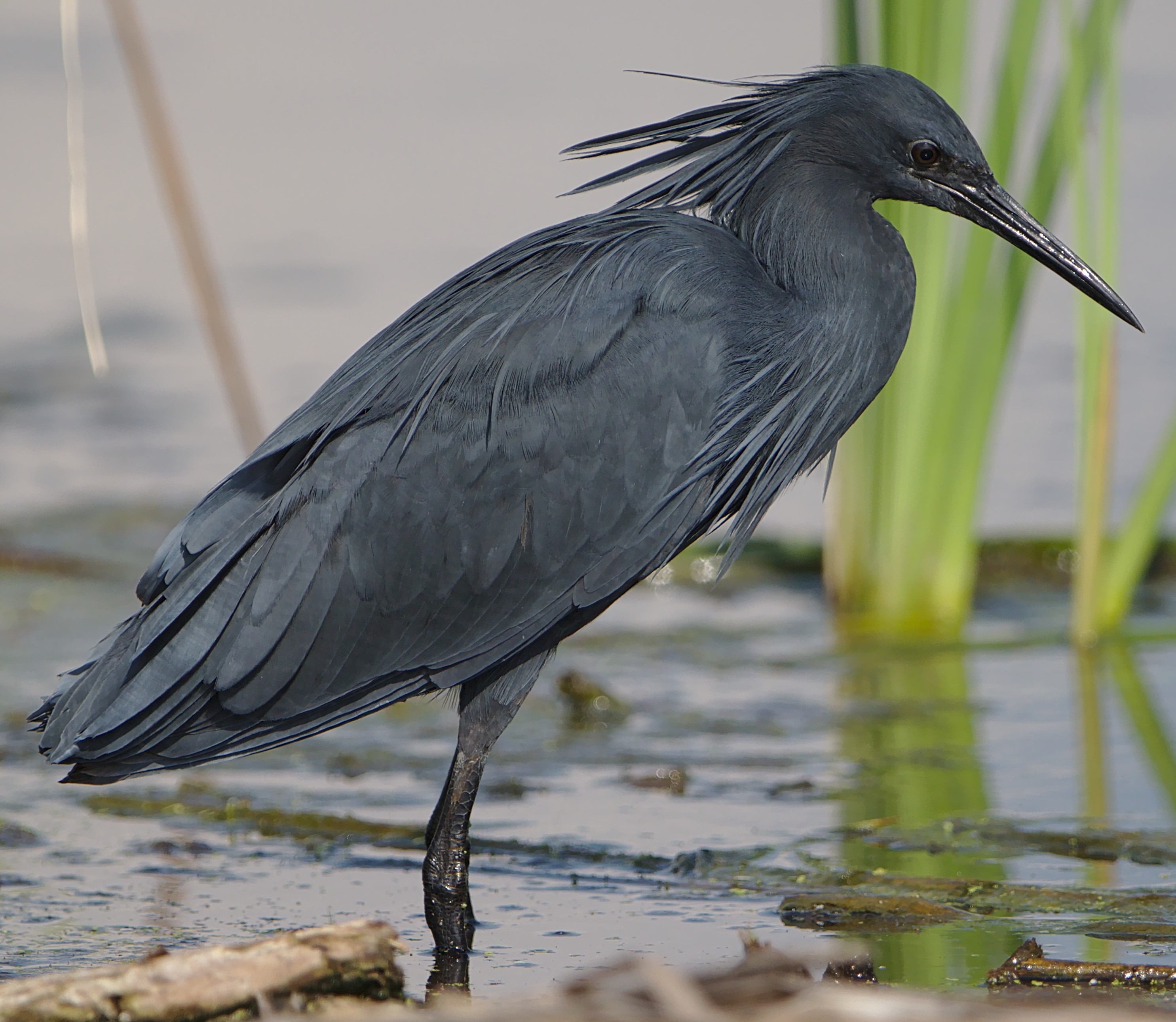
Black heron
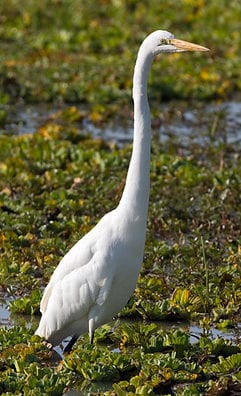
Yellow-billed egret
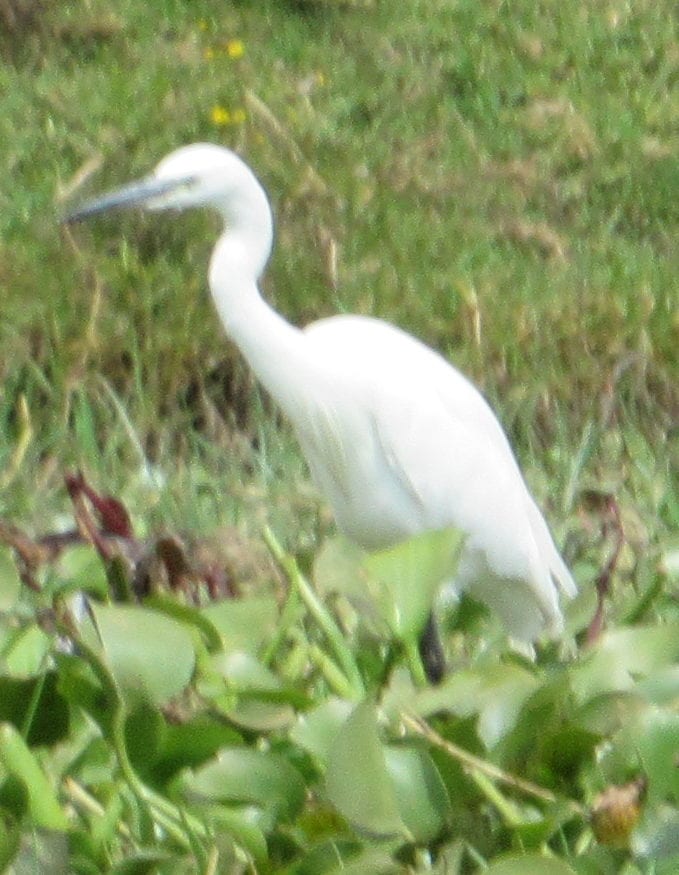
Little egret
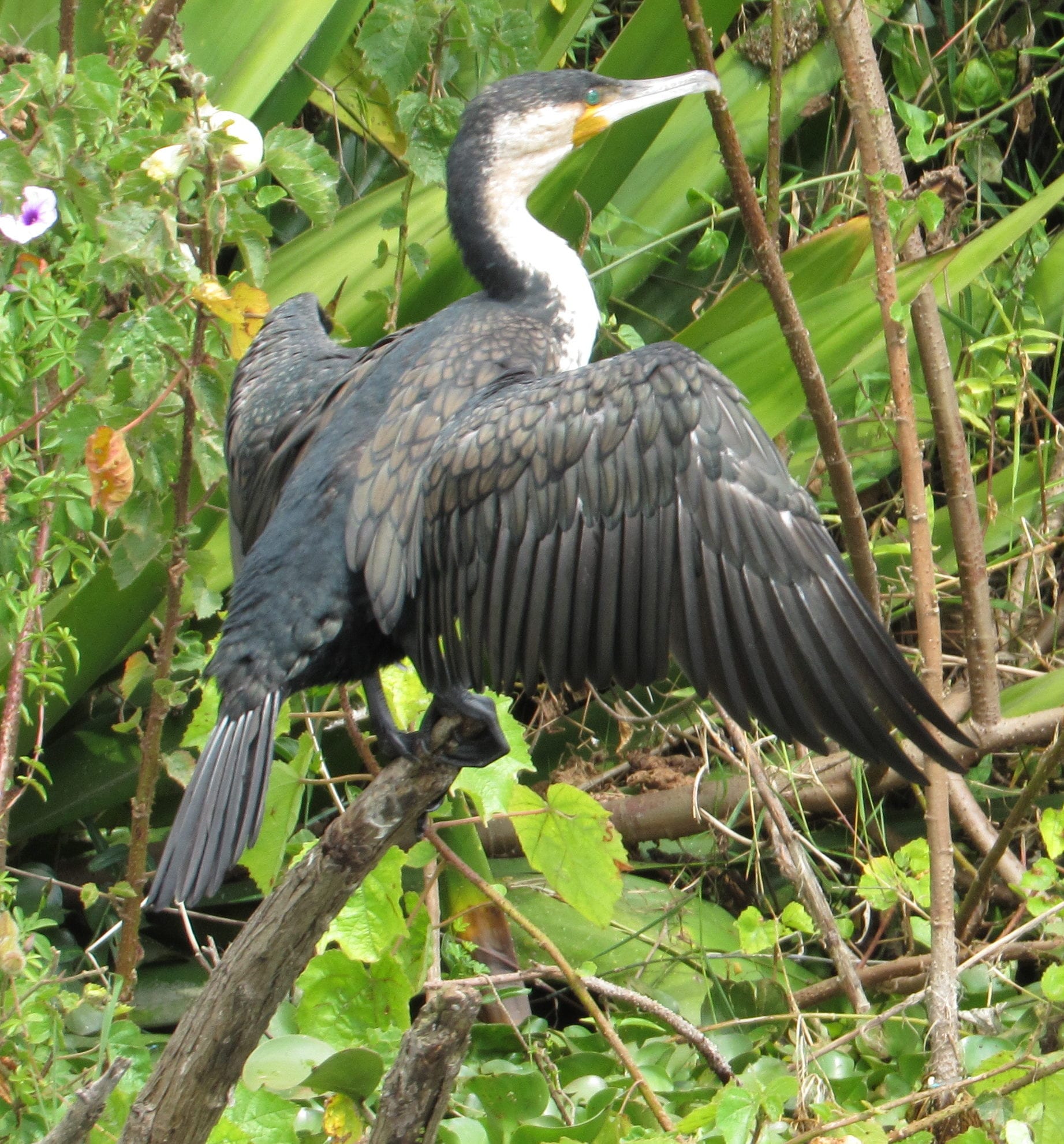
Great cormorant
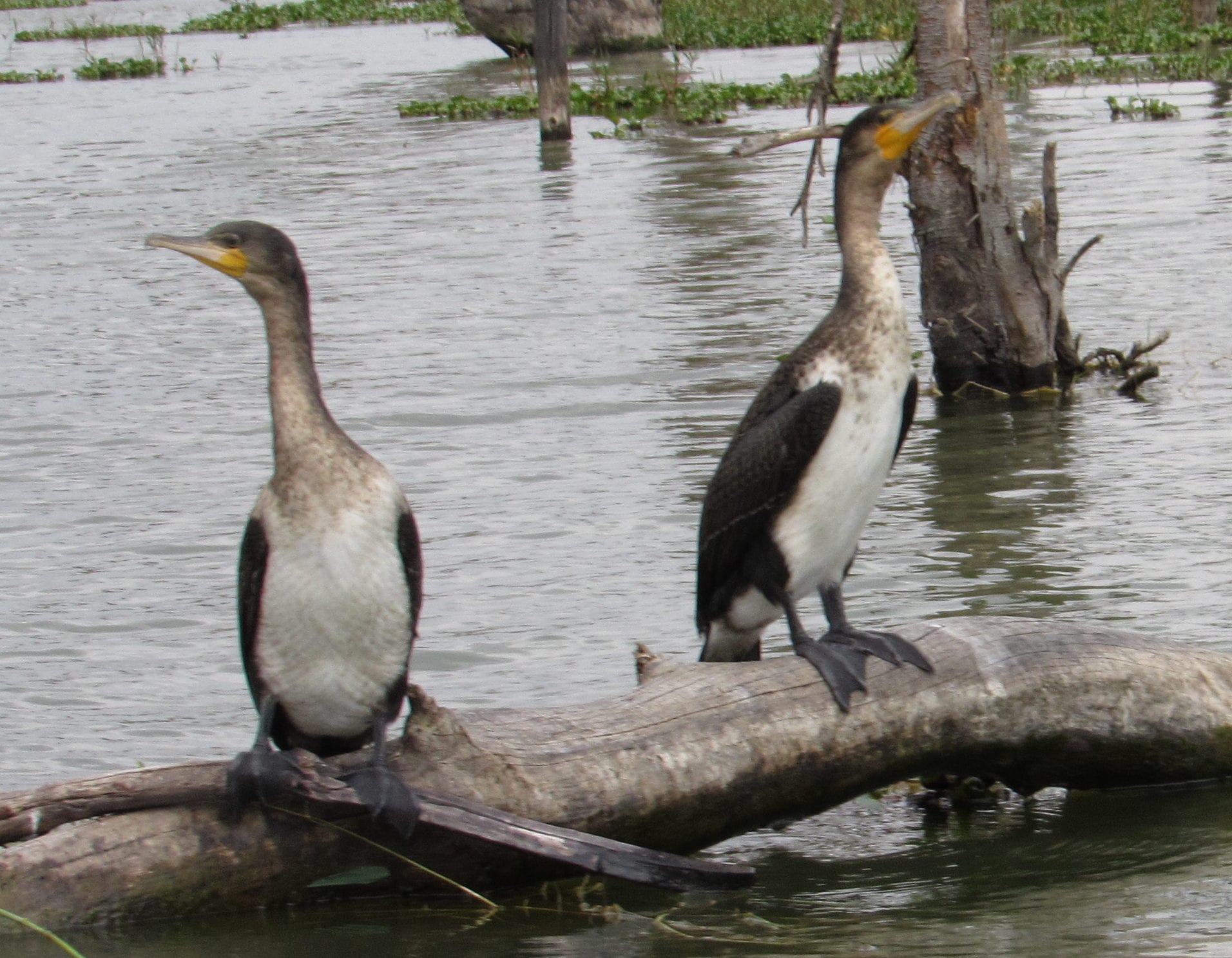
Great cormorants

Reed cormorant
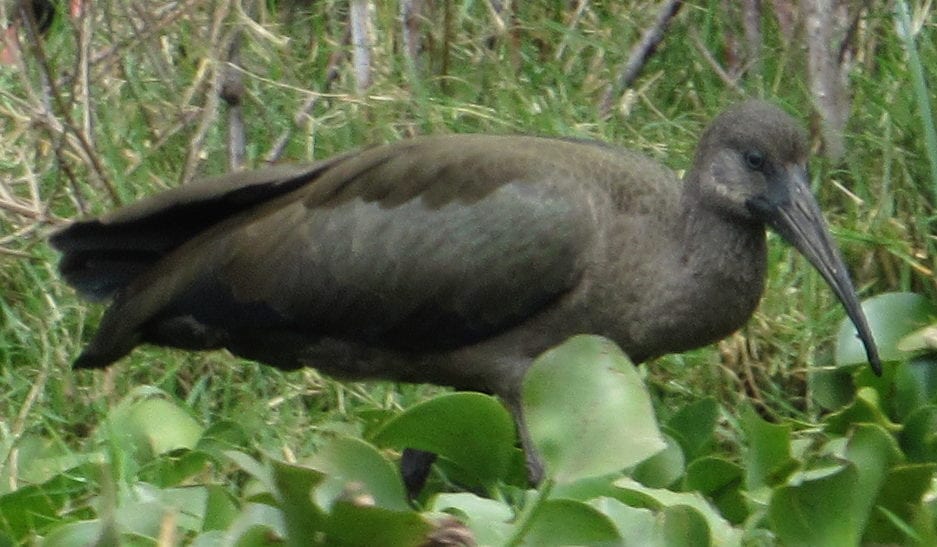
Hadada ibis
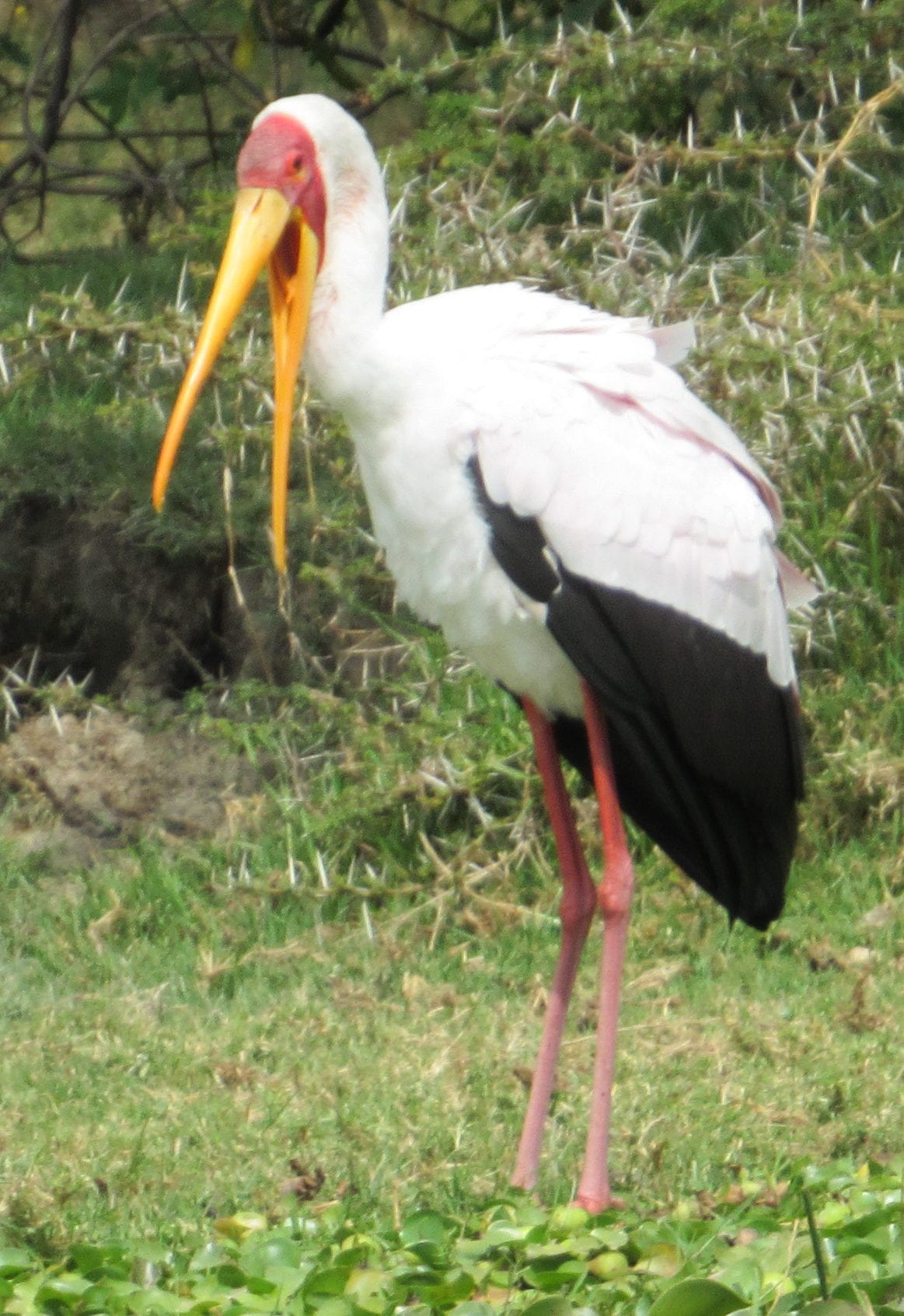
Yellow-billed stork
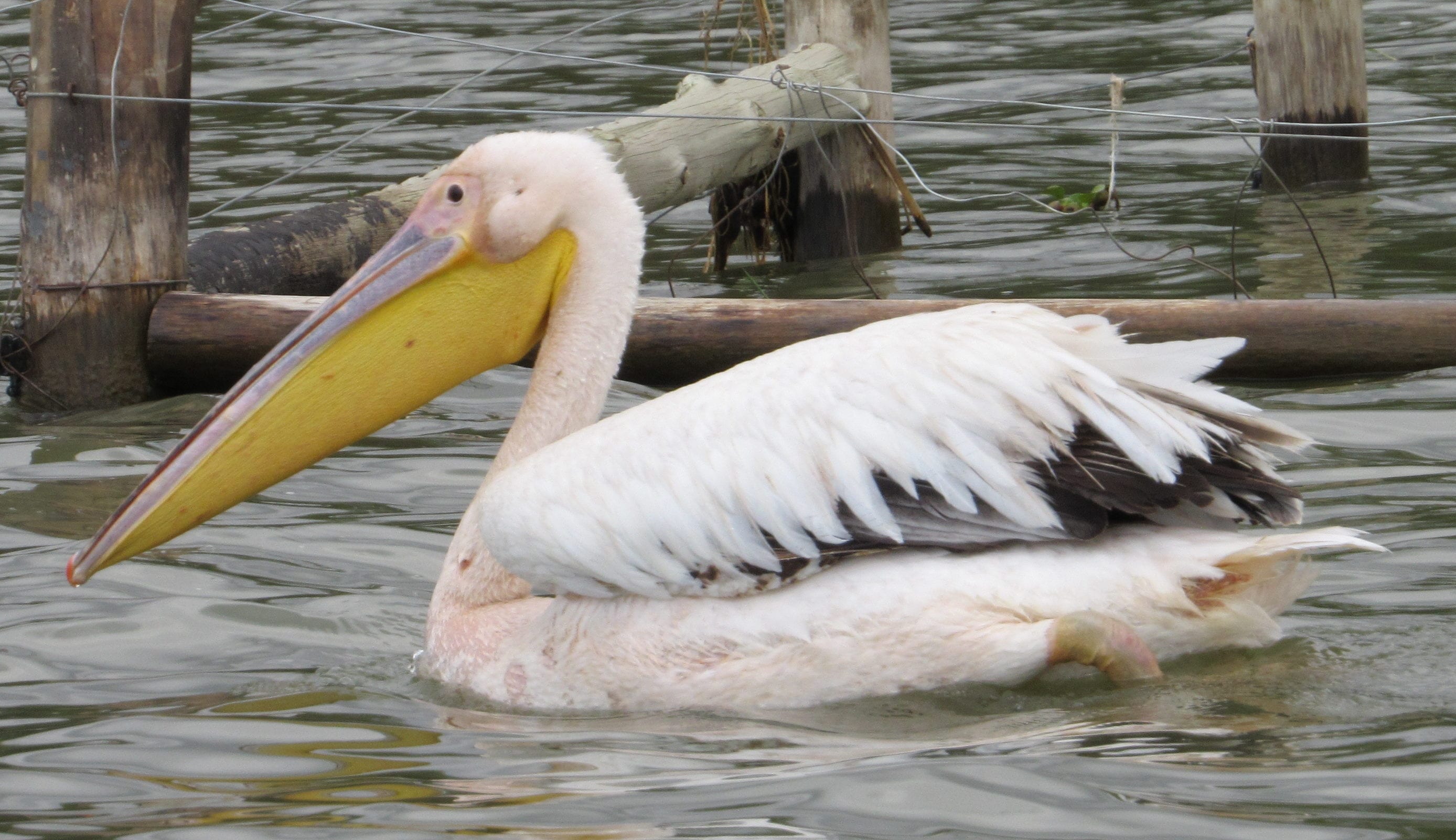
Great white pelican

Spur-winged lapwing

Pied kingfisher
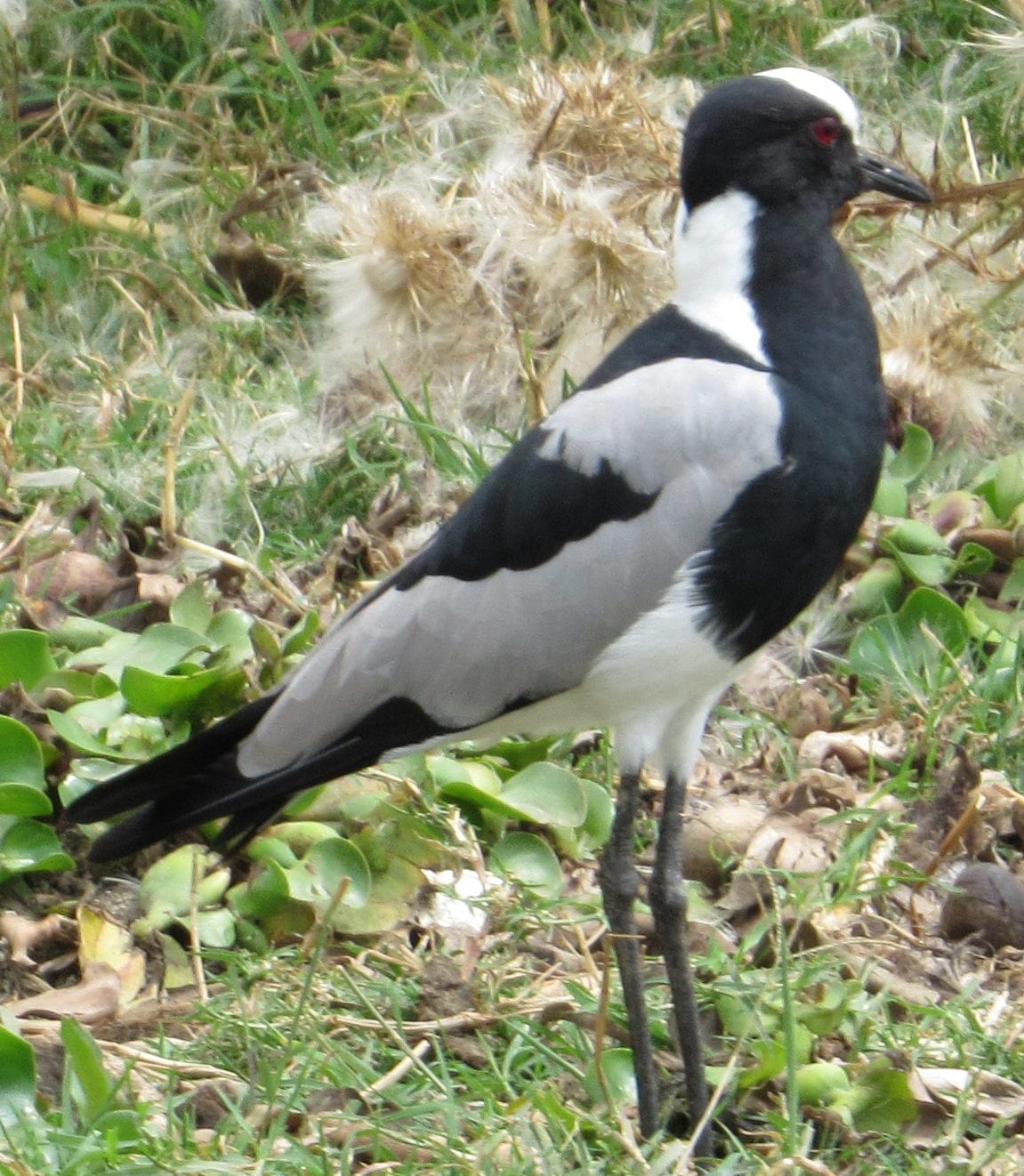
Blacksmith plover
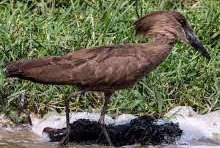
Hammerkop
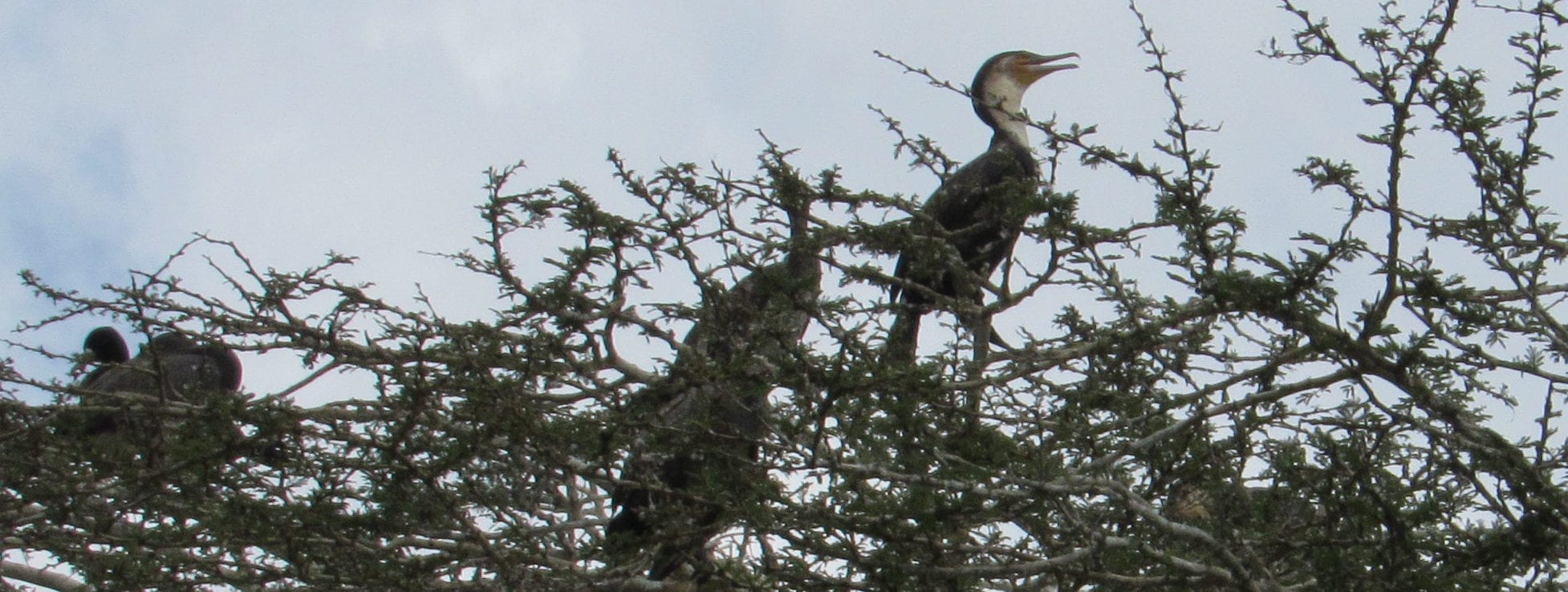
Nesting cormorants
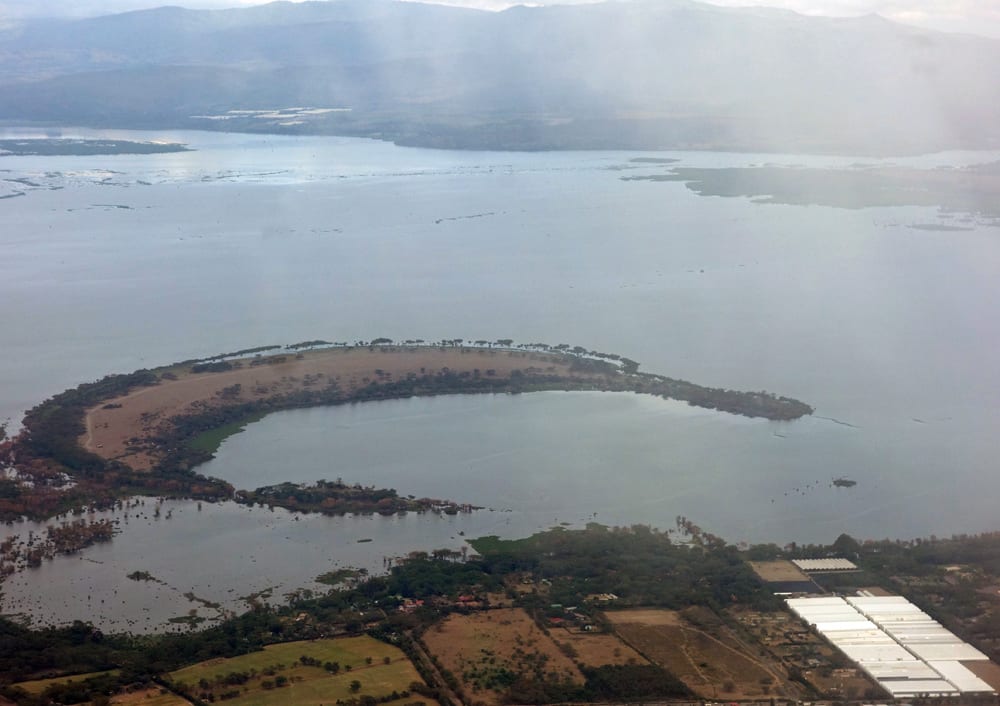
Aerial view of Crescent Island in Lake Naivasha
On the east side of the lake is a crescent-shaped island where Out of Africa was filmed in 1984. (The movie won seven Academy Awards, including Best Picture.) Many animals were brought here specifically for the filming; afterward, the predators were removed and Crescent Island was turned into a game sanctuary where tourists can walk with the wildlife–and the giraffes, zebras, waterbucks, and other grazers can live to a ripe old age and die in their sleep. To avoid overpopulating the island, surplus animals are taken to other wildlife preserves. The trees along one side of the island serve as a breeding area for scores of cormorants.

Fish eagle
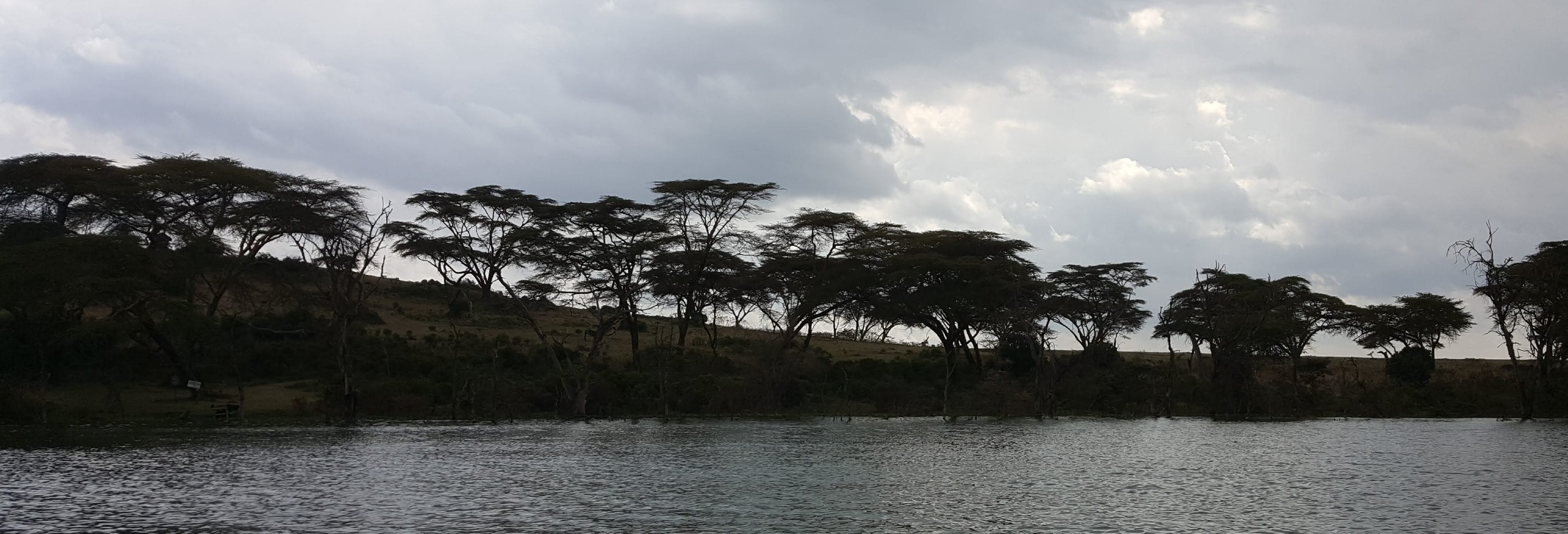
Clouds gather over the western shore of Lake Naivasha
On the western shore of the lake, we spied an African fish eagle feeding the young birds in her nest. Another one was perched in a nearby treetop. These are huge birds, with a wingspan of nearly eight feet.
“Watch this,” said our guide, reaching for a bucket full of tilapia. He whistled and then threw a fish in a high arc over the water. The eagle swooped out of the tree and caught it with its claws in midair. Pretty impressive.
As the pilot steered us back toward the dock, light rain showers began to fall from the gray clouds that had moved in after we went out on the water. We were glad that we had begun our tour when we did and that we weren’t among those on shore waiting for their turn in the boats; they were likely to have a wet ride.
After we disembarked, Amos had some news for us: While we had been on the lake, he had seen the mongoose venture out from under his Land Cruiser and scurry across the parking area. Unfortunately, a domestic cat from the boat rental office also had seen the mongoose come out from under the Land Cruiser, and immediately gave chase. Both animals disappeared into the bushes, not to be seen again before we left Lake Naivasha. Pity the poor mongoose: although it had managed to escape from the claws of a lion and then hang onto the undercarriage of a moving vehicle for more than 150 miles, the ill-fated creature seemed destined for a life of endless flight, never to be reunited with family and friends.
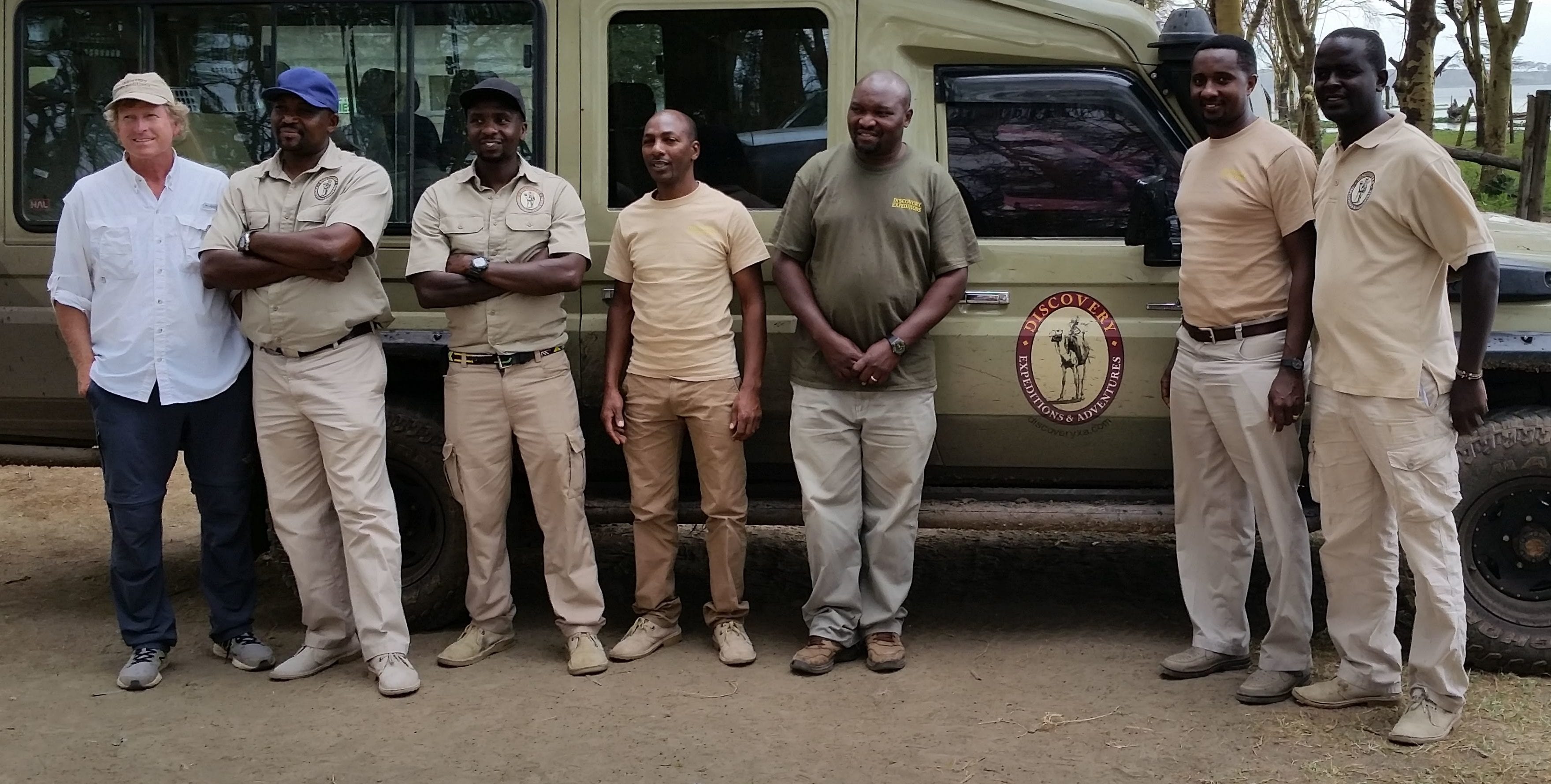
Jim and his band of brothers: Edwin, Jackson, Geoffrey, Steven, Anthony, and Amos
Before the Discovery XA group got back on the road, Jim was determined to get a photo of himself with our six drivers. This was his last opportunity, because by the time we stopped again in Nairobi it was likely to be dark, and tomorrow Anthony and Steven would be moving on to to assignments with other tour groups. However, as Jim tried to gather all six together, he realized that Geoffrey was missing–as was his Land Cruiser. About ten minutes later, Geoffrey drove up in a sparkling clean vehicle. “Sorry!” he said. “The car wash took longer than I expected!”
Car wash services are common along Kenya’s main highways–and after what we’ve driven through this week, that should come as no surprise. Geoffrey’s efforts may have been for naught, however, because rain began falling more steadily and muddy spray was splashing up from the road surface as we left the lake and drove through the town of Naivasha. Traffic was slow again this afternoon not because of trucks, but because the highway was glutted with weekend travelers returning to Nairobi–but again, traffic stalls allowed us more opportunities to take less-blurry photos out the windows of our vehicle.
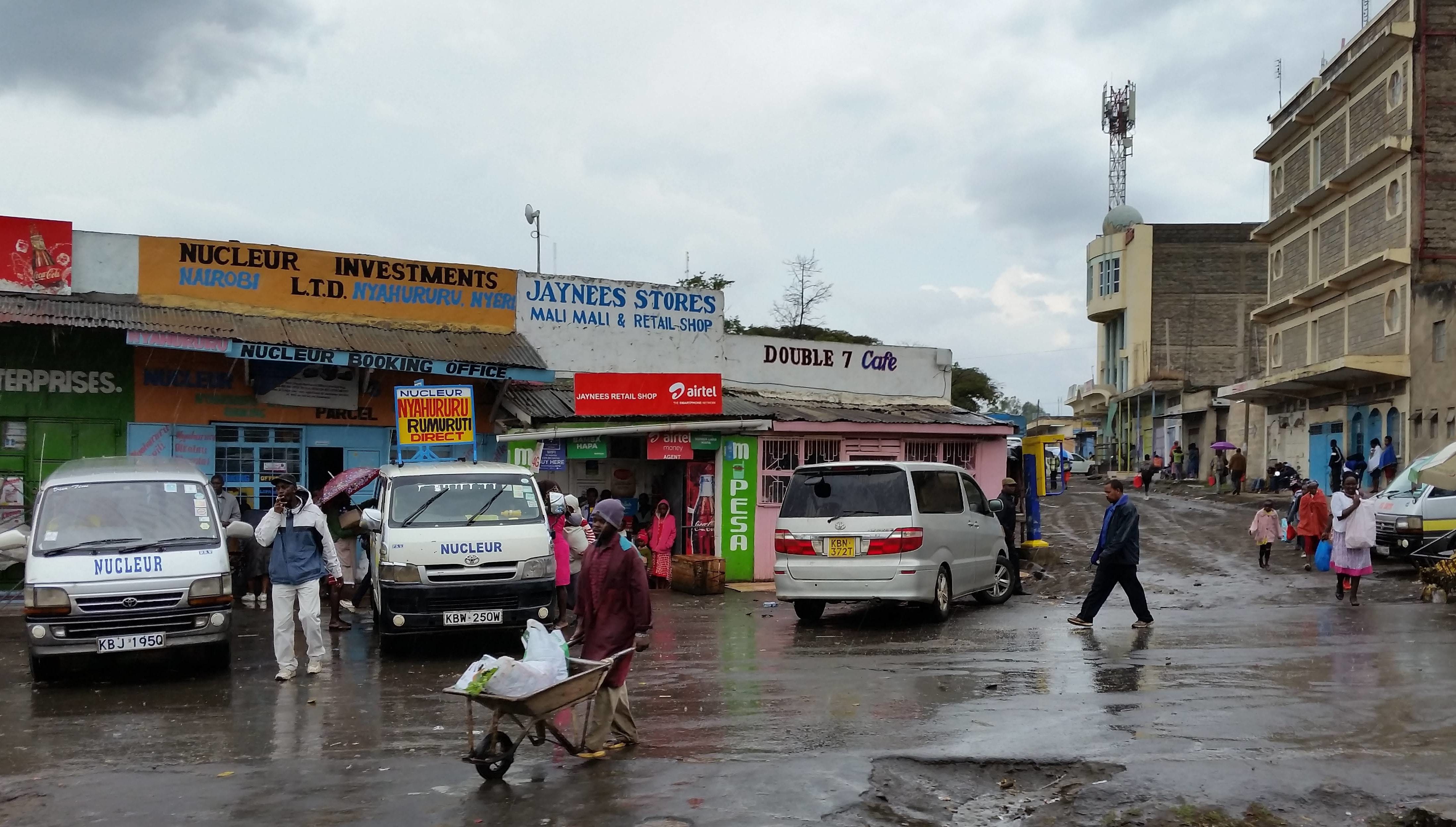
The central business district of Naivasha, population 180,000
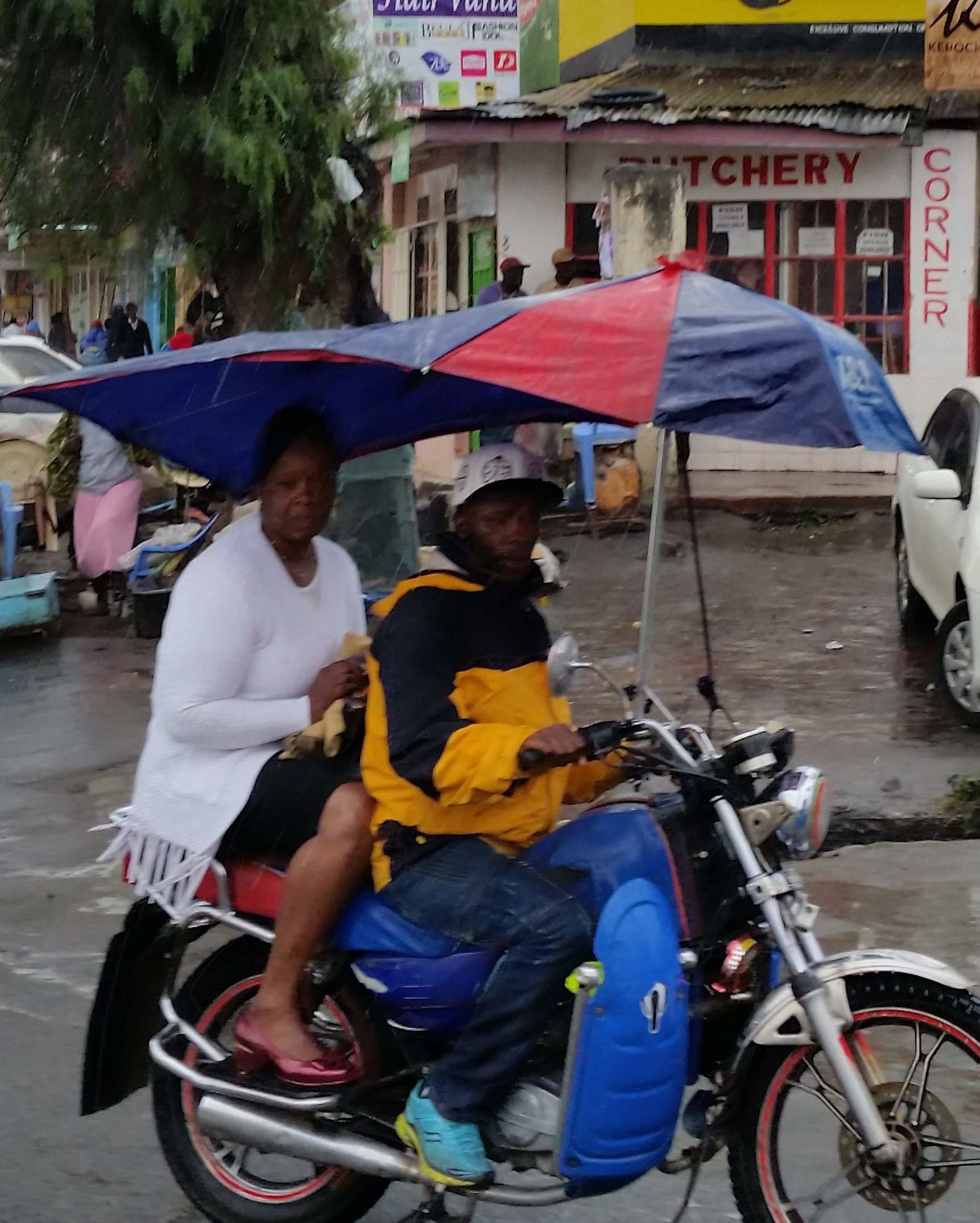
Motorcycling in any weather
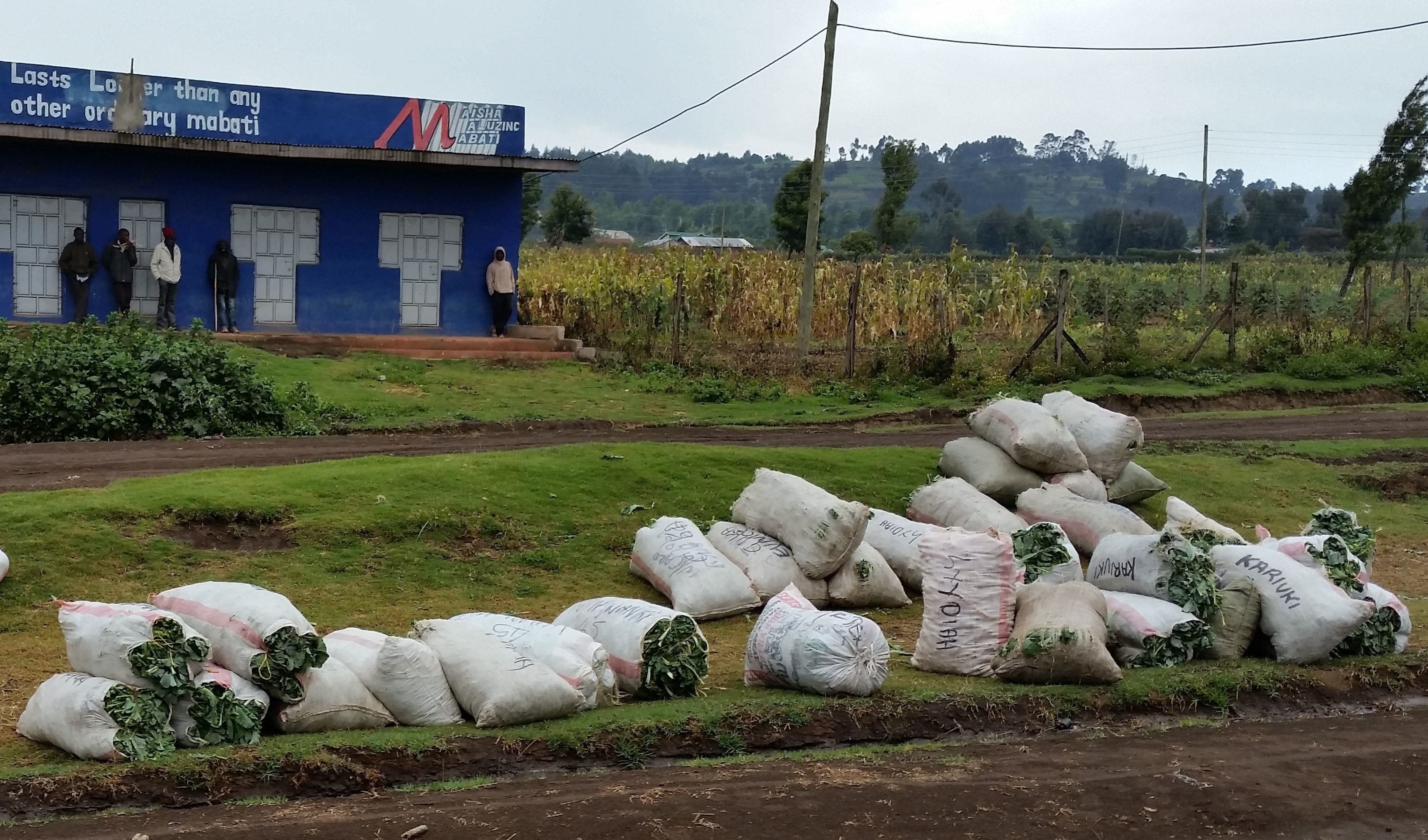
Bags of kale wait at the roadside to be picked up and transported to market
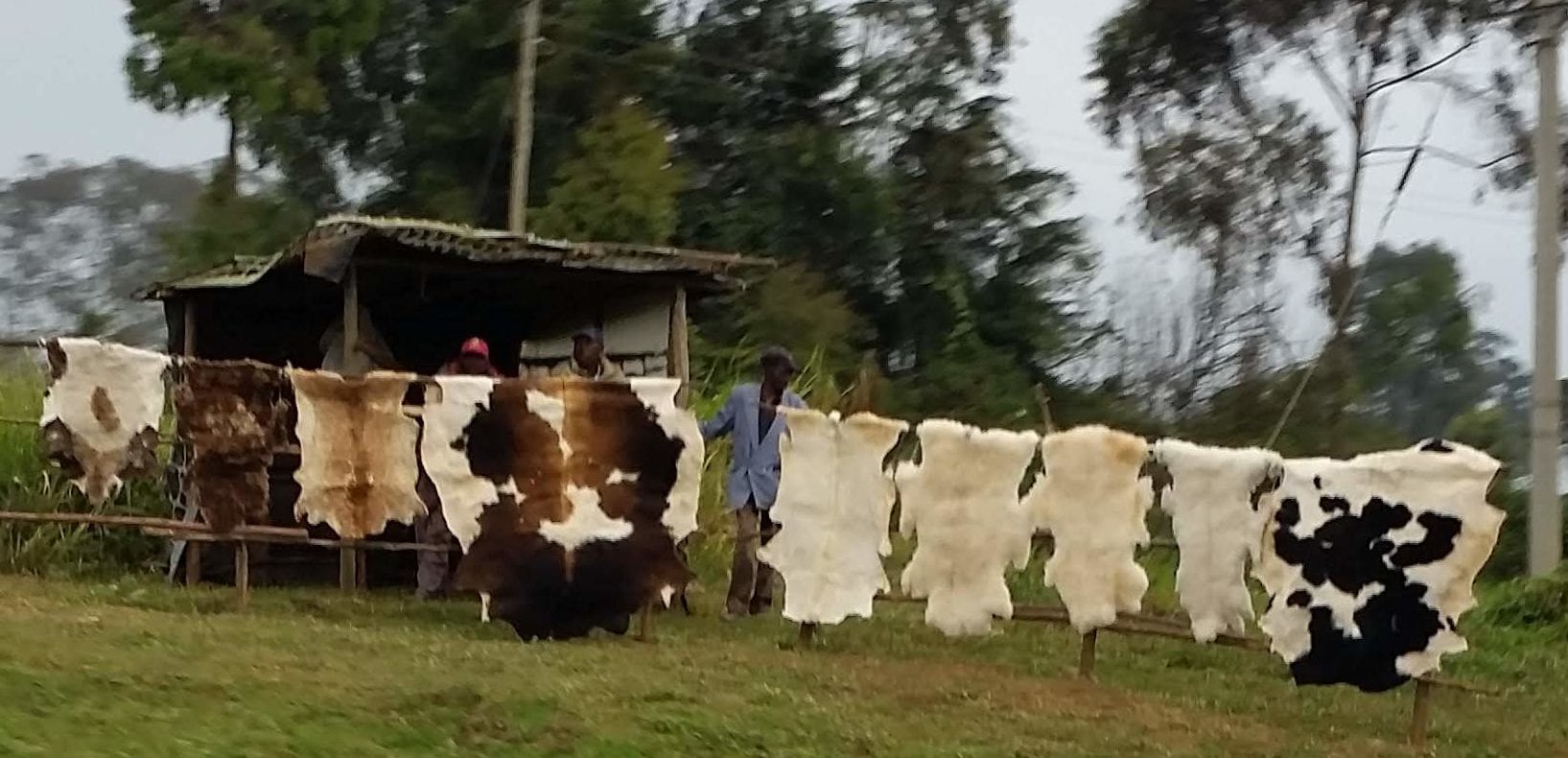
Animal hides for sale
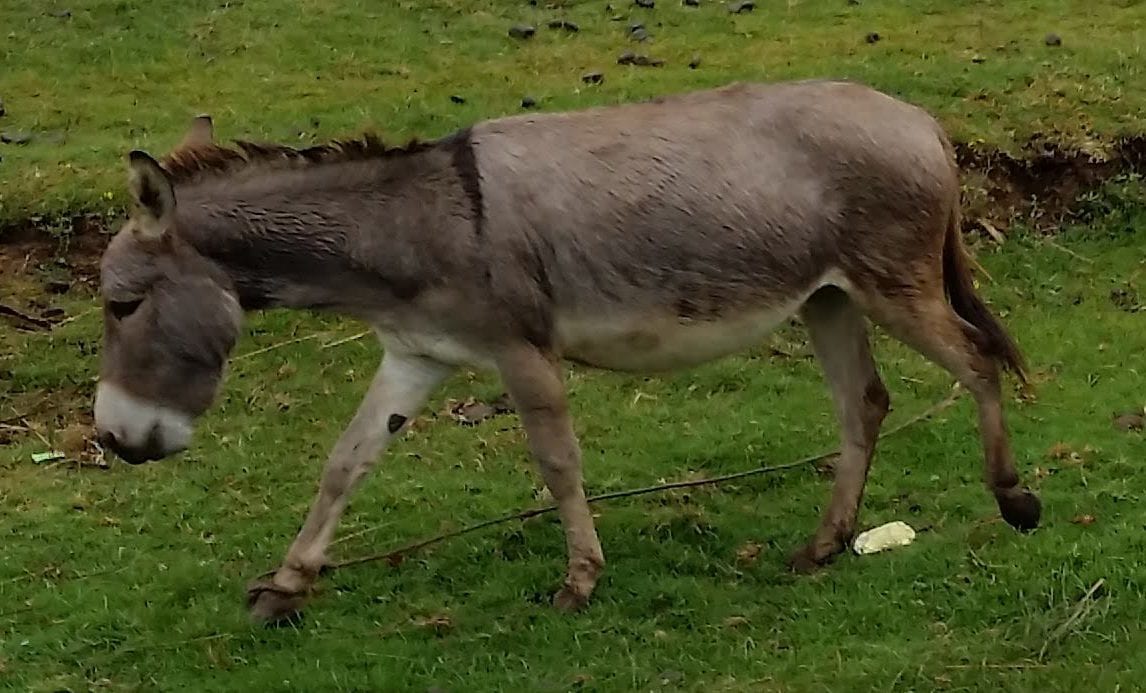
Donkeys wander along the road even when they aren’t carrying a load

The highlands above the Great Rift Valley are verdant with cedar and eucalyptus plantations
One roadside curiosity we did not get a photo of was a Sunday revival meeting. We passed several strip malls where Christian ministers–recognizable in their suit coats and ties–were preaching from platforms set up in the parking area next to the highway. The sound of enthusiastic call-and-response worship reached our ears as we drove by; one congregation was singing and dancing to a lively hymn.
Traffic really bogged down as we neared Nairobi, but fortunately we were entering the city from the west, the same side where our hotel, the Southern Sun Mayfair Resort, is located, so we didn’t have to navigate through the downtown area. Even so, the 55-mile trip from the lake had taken more than two hours. The time passed pleasantly for Michael, who was sitting up front where he could more easily hear Amos’s commentary on sights along the way.
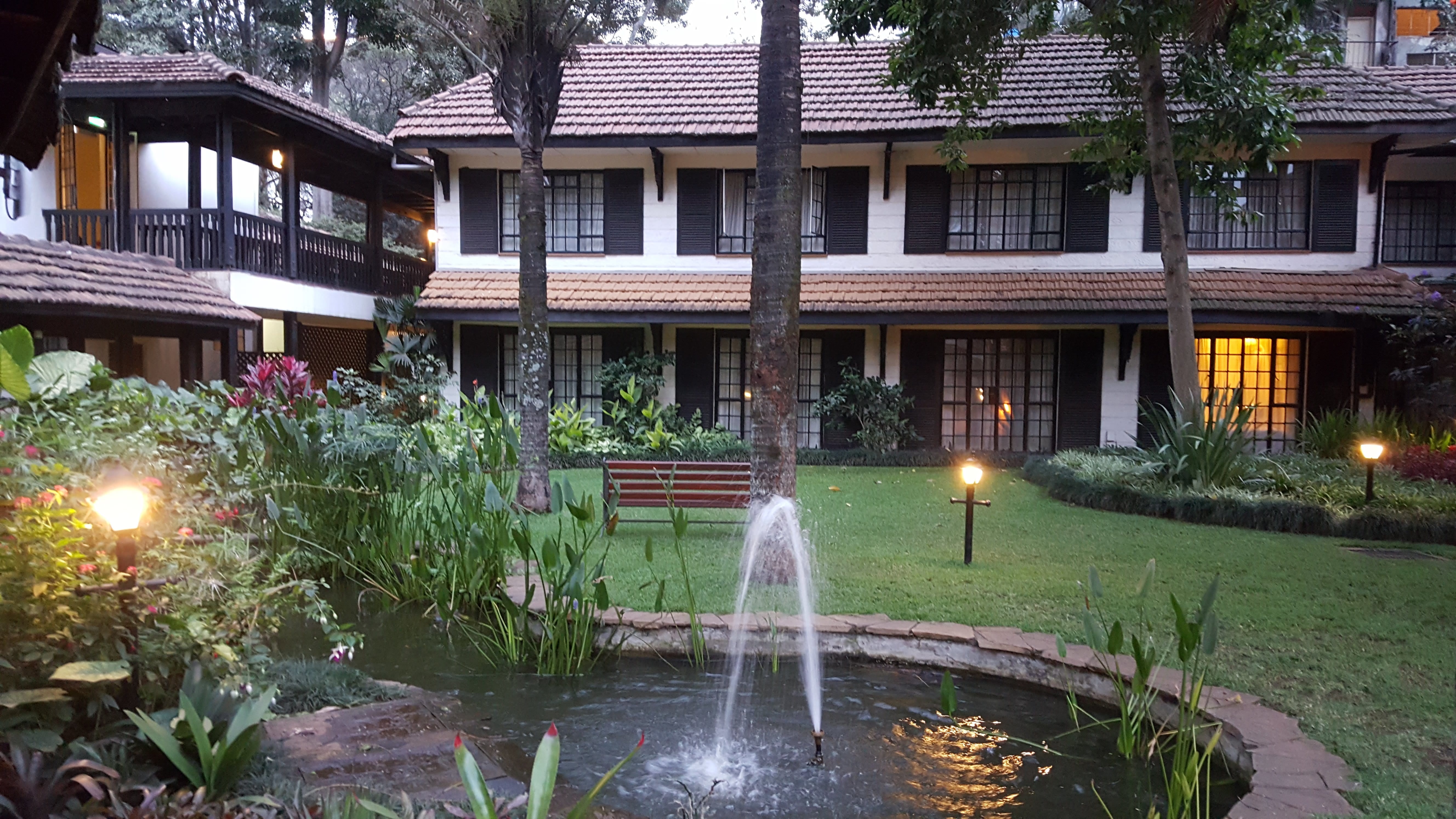
The courtyard of the Southern Sun Mayfair Resort
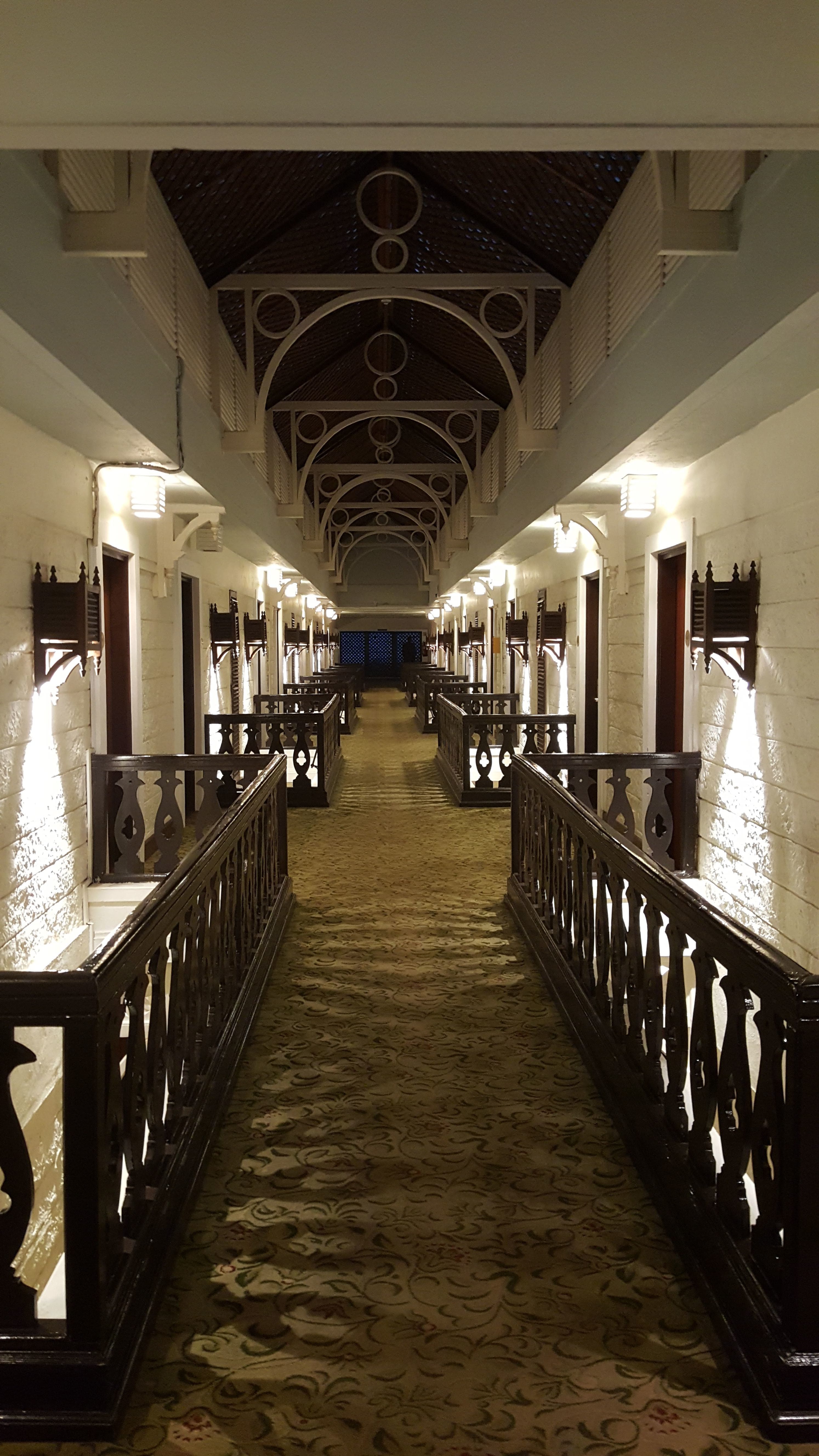
This gallery leads to the hotel ballroom
The sun was setting by the time we reached the hotel, and a chorus of peeping frogs sang from the ponds as we checked in and found our rooms. Tonight we are assigned to a room facing the inner courtyard, so we hope that the frogs won’t continue to peep all night. Jim had told us that we would be on our own for dinner tonight, but for security reasons he discouraged us from venturing beyond the hotel compound. That left us two choices: the Oasis poolside buffet where we had eaten breakfast on our first morning in Kenya, or the Golden Spur Steak Ranch near the hotel office. Some of the group chose the a la carte Golden Spur, but we weren’t really interested in steaks or burgers so we returned to the Oasis buffet. We are happy that we did, because otherwise we would have missed the fresh, grilled-to-order red snapper. It was truly exceptional!
Leave A Comment